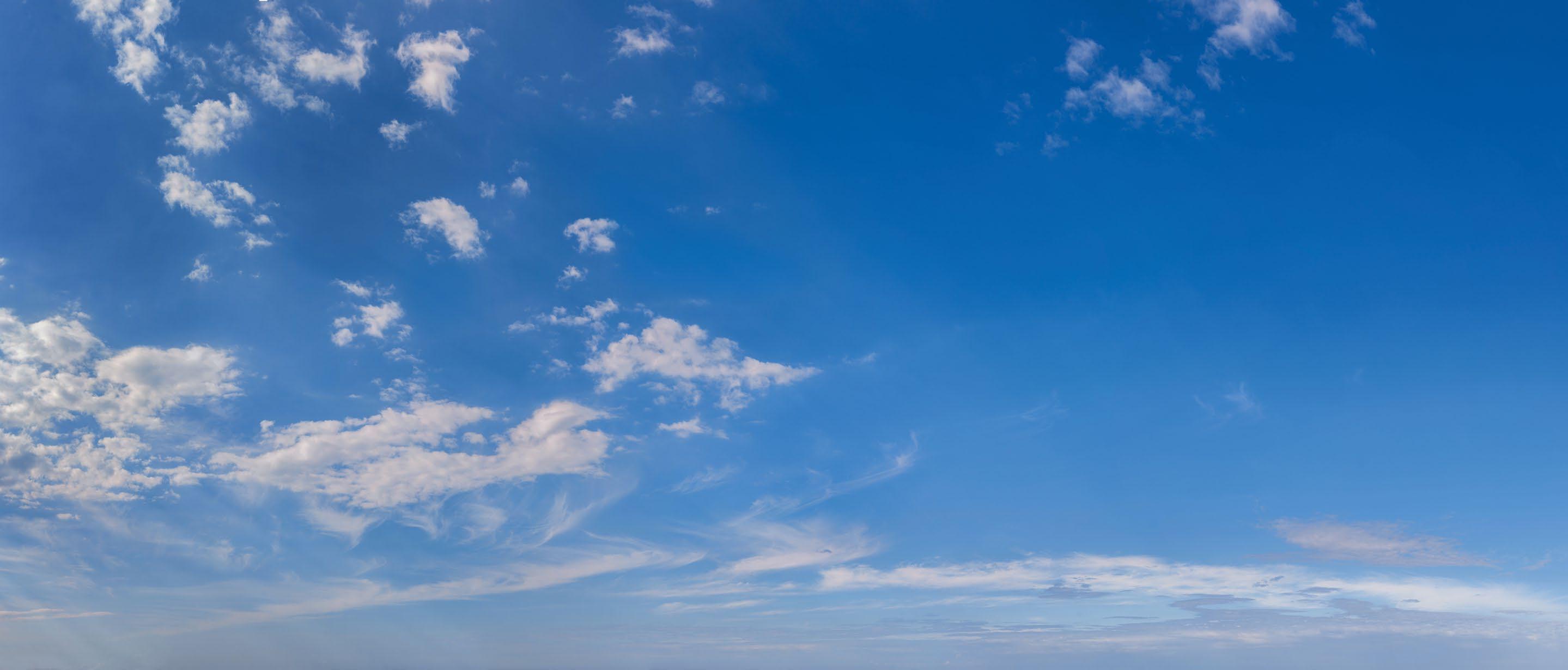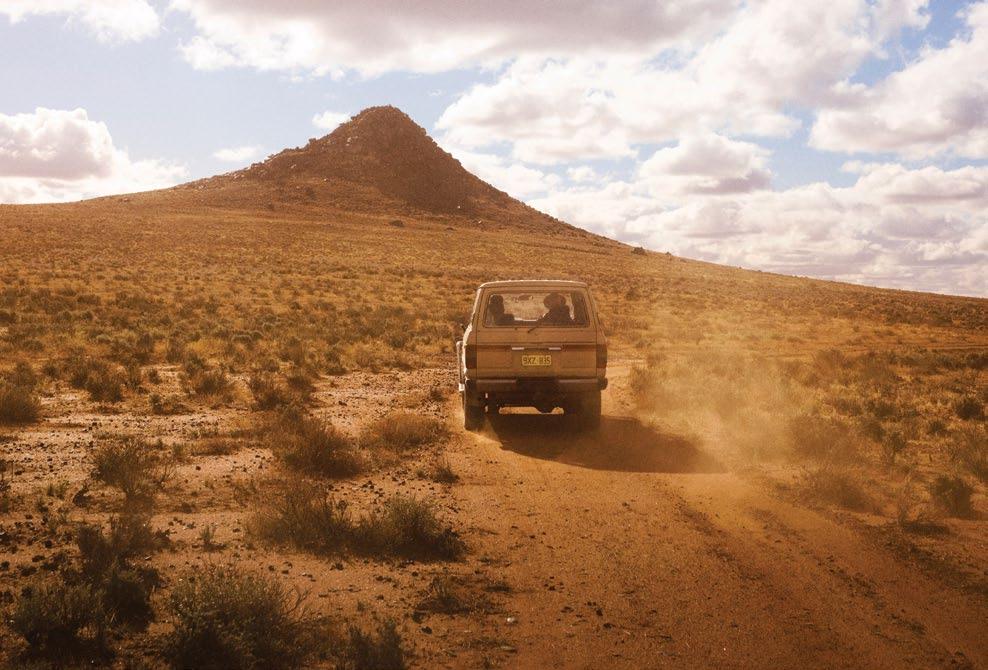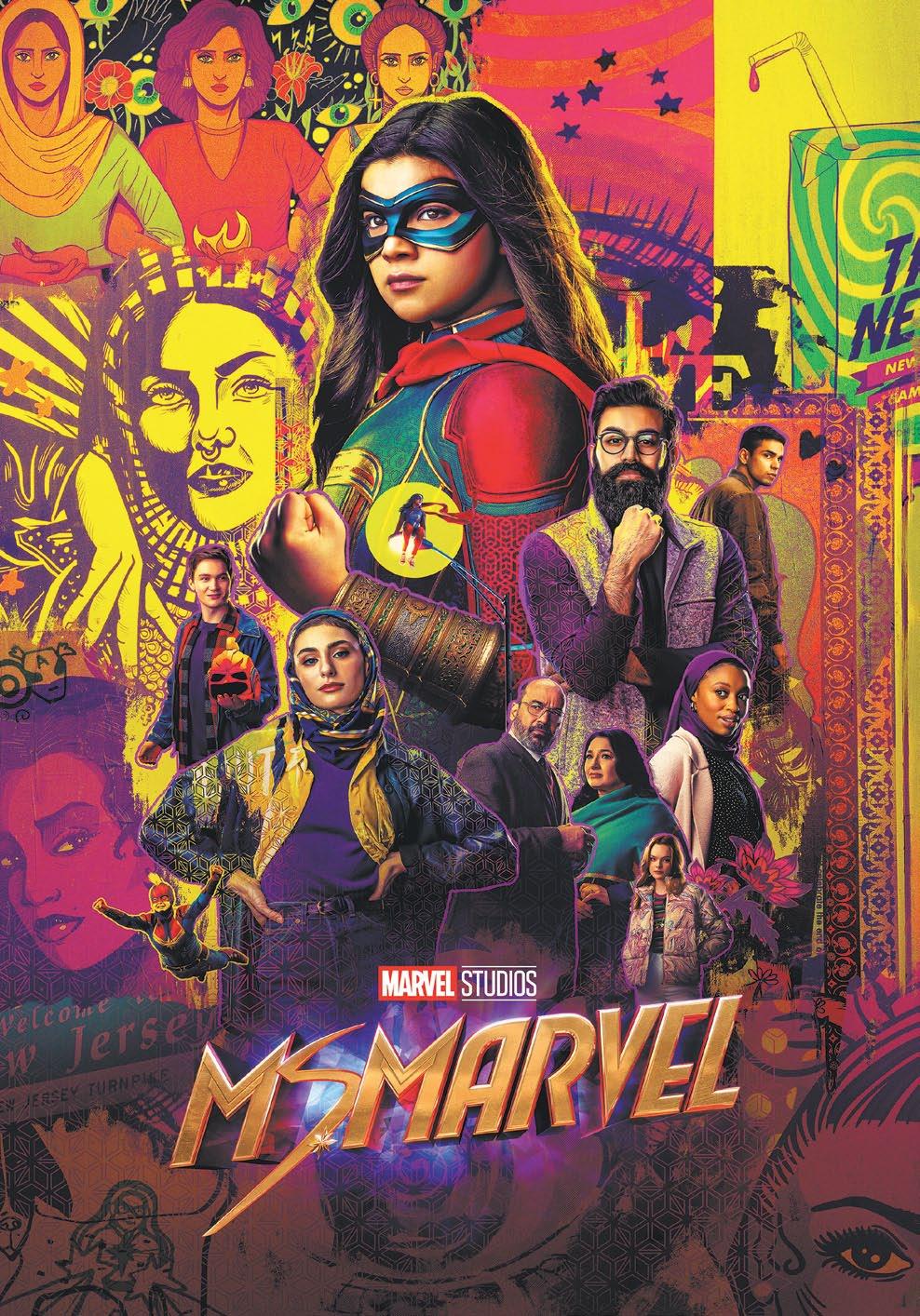





PUBLISHER
Pawan Luthra
EDITORRajni Anand Luthra

CONTRIBUTORS
Rhea L Nath, Bhavya Pandey, Khushaal Vyas, Neha Jain, Usha







Pawan Luthra
EDITORRajni Anand Luthra

Rhea L Nath, Bhavya Pandey, Khushaal Vyas, Neha Jain, Usha
The Air India flight from Delhi takes off at 2pm Indian time and arrives in Sydney at 7am the next morning. Passengers arriving these past few weeks have experienced two extremes of the weather – Delhi sweltering at 49 degrees, and Sydney freezing at 9 degrees, a difference of 40 degrees. Yes, different hemispheres and different seasons, but there is no denying that extreme temperatures are increasingly becoming a part of our everyday experience. Australia, especially NSW, has seen one natural calamity after another in recent years, with bushfires and floods. Who can forget the images of the South Coast community huddled on the beach waiting for the navy to evacuate them as the fires raged in their town and homes? Only months later, we saw footage of a flooded Lismore, with calls going out to anyone who owned a boat to get out there and rescue stranded residents (thankfully this
call was soon rescinded). The two experiences exposed us to the opposite ends of extreme weather conditions. As this edition goes to print, we’re experiencing an icy cold wave, and it is expected to get colder and wetter than before.
Southeast Asia and its 1.5 billion population have suffered from soaring temperatures. Places like Delhi are experiencing heat waves with temperature ranges of 30 to 49 degrees and this in the month of May, with June expected to be drier and hotter. Wildfires are common and so is the devastation on animals and the farmers whose crops wither away in the heat. The bulk of the population cannot afford air conditioning and the day-to-day manual workers are exposed to the elements. The United Nations Intergovernmental Panel on Climate Change is concerned that life could literally become unbearable in South Asia before the end of the century. Temperatures could rise by upto 2.7 degrees Celsius, with disastrous effects on our glaciers.
It was not that long ago that the UN’s Climate Change Conference COP 26 took place in Glasgow, where governments agreed that climate
change is real, and action needs to be taken. The challenge is balancing the demands of the near benefits to the benefits of the far away.


Over 130 countries signed up to a zero net emissions deadline of 2050, China of 2060. India has resisted the call to impose a deadline, as it believes that it is a victim of, and not a contributor to, climate change. Many of its citizens have been impacted by climate change, but it is aware that if it pushes for stronger climate change policies, its economic development will be hampered which in turn will affects millions of its citizens.
The debate on climate change seems to have stalled for now as the world focusses on the Ukraine-Russia conflict and the rising challenges of being denied Russian oil and gas. Whether that will push countries to look at cleaner forms of energy and accelerate the development of their own sources of clean energy, time will tell.
Meanwhile, those in South Asia who are on the forefront of the ravages of climate change are too busy surviving rather than starting a revolution, and those in other privileged countries have shown they can push political will at the ballot box.




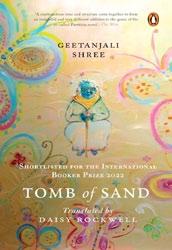




After nine years serving as the Opposition, the Labor Party has been given the keys to Canberra, with leader Anthony Albanese sworn in as the 31st Prime Minister of Australia. A change in government can be an exciting as well as scary time, dealing with new terrain.
So what can this election result mean for India-Australia relations?
Ties between the two countries go way back, with Labor ironically seen as the ones to have wrecked but also salvaged the crucial relationship with India. Of course, we live in different times and a different world today than Labor leaders had envisioned three decades ago.
In the early 1990s, as trade liberalisation was initiated in India with numerous economic reforms, then Prime Minister Paul Keating opted not to jump on the train that saw the US, UK, Germany, France, and other countries flood into the Indian market. Within four years, foreign investment in India increased from around US $130 million in 1991-92 to $5.3 billion by 1995-96 as Australia gazed on.
Instead, despite the traditional links to India based on curry, cricket, and Commonwealth, it seems Keating’s vision of Asia only went as far as Malaysia, with the Labor leader occupying himself in building bridges with Malaysia and then Prime Minister Mahathir Mohamad over all the possibilities India held.
Fast forward a few years and India faced vitriol almost across the board when it initiated the Pokhran nuclear tests in 1998. With this “outrageous act of nuclear bastardry” (as Shadow Minister for Foreign Affairs Laurie Brereton put it) relations only soured between the two countries. It’s even said that Indian dignitaries had an unwritten directive against interactions with Australia that only thawed with overtures to business opportunities by then Prime Minister John Howard and Trade Minister Tim Fisher.
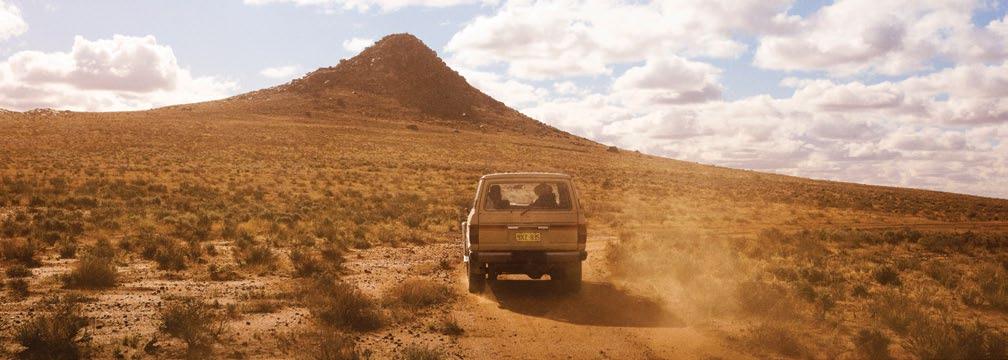
Under the 2007 Labor government led by Kevin Rudd, it was perceived that the administration was far closer to China than the Indian subcontinent; building sturdy bridges between Australia and India was understandably a difficult task, or one not urgent enough.
The salvaging of Indo-Aus relations came under the Gillard administration, who stunned

naysayers by convincing the caucus to sell uranium to “dynamic, democratic India” in 2011. Even as India refused to sign the nuclear non-proliferation treaty, a prerequisite under Labor for uranium sales, she argued for the policy as an economic and environment measure towards cleaner energy from a developing India.
Revolving chairs in the Labor leadership meant that the stability needed for stronger ties between India and Australia remained at the fringe, ultimately taking off in 2014 under the Abbott Coalition government. Tony Abbott as Prime Minister saw more than a few similarities with the newly elected Modi regime. Not only did the political ideologies of the leaders closely align, but similar modest beginnings and religious outlooks translated to a great relationship between the two nations.
So great, in fact, that it translated into a visit by an Indian leader on Australian soil for the first time in almost 30 years, when Modi attended the G20 Summit in 2014. Not since 1986 with Rajiv Gandhi’s visit had an Indian Prime Minister crossed the seas for the land down under.
The comfortable dynamic ultimately flowed over to Abbott’s successor Scott Morrison, even as the geopolitics of the Asia Pacific changed drastically. The Quad came to the forefront as Chinese power grew in the region, most recently observed with China’s new security agreement with the Solomon Islands.
Following the 2022 elections, Australia finds itself at a fascinating juncture in its relationship with India. On one hand, along with the US and Japan, Australia has taken a strong stance against the violence in Ukraine but remained mum on India’s wishy-washy stance with Russia. In today’s world of geopolitical exigencies, it appears ties rely entirely on an issue-by-issue basis, pitting together the unlikely duo of Albo and NaMo over common grounds of defence and trade.
PM Albanese met PM Modi for the first time in Tokyo almost immediately after being sworn in. The relationship will strengthen further given Australia is to host Quad 2023 and PM Modi is expected to visit after a gap of 9 years.

It’s been an on-again-off-again relationship between Labor and India, and we wait to see new PM Anthony Albanese’s take on it
in today’s world of geopolitical exigencies, it appears ties rely entirely on an issue-by-issue basis, pitting together the unlikely duo of Albo and NaMo over common grounds of defence and trade.Pic: Press Information Bureau, n ew Delhi
You liked our story on reactions to a now-viral Reddit post, in which a person recalled being asked to wait in his Swedish friend's room while his friend ate dinner with his family downstairs. Since then, social media users have been weighing in on this ‘strange’ dinner guest etiquette.


Amina Louragli wrote: Haha, happened to us in Norway too. This was absolutely normal in my childhood. I was told to WAIT IN THE BEDROOM while my friend was eating dinner. I was sitting there dreaming about the fish ball thing dinner (fiskeboller), weirdest thing to dream about. But this was totally normal, and no one raised an eyebrow. On the other side, my Moroccan mum would not let people leave our house without forcing them to eat.
SJ wrote: One time, I was going to sleep over at a friend’s house. They told me to go home and eat, then come back.
Isabelle wrote: I am Swedish, born and raised and I have never heard of this behaviour before. My parents always feed every one of my friends when they come over to our house and I was always offered food when I was at my friends’. Same with my siblings and their friends.
Insta_globetrotter wrote: Its true. I’m half Indian and half Swedish. When someone came to my house we always offered food etc but when I went to Swedish houses, you had to wait in their rooms or they sent you home because they were going to eat. Johanna Andersen wrote: You have to go long back in history to understand some behaviours and this seems to linger from the time (not so long ago) when Sweden was very poor. Also, it's strongly in the culture that everybody is equal. If I give your child food, it could mean that I think that you can't take care of your child, not it’s so polite and it could be (interpreted) that you now owe me one. I do not agree that Swedish culture is a selfish one. Swedes really want to help others and be polite (like standing in line, talk with a quiet voice, not littering, taking it easy in traffic and following the rules, and so on). I grew up in the ‘80s. Every kid I knew was waiting when your friends had dinner, no one thought it was strange. I don't do this now with my child’s friends, behaviours change with time.
This time around, we asked you to identify the ‘spiritual home of racing’ in Australia.

Ossian wrote: In my experience, it is a thing more or less, but not as dramatic as this Twitter-explosion is making it to be. I’ve been through it a couple of times, but I’ve never seen it as rude. If you wanted food at a friend’s house, this should be decided before. If he/she doesn’t know you want to join for dinner before that, that’s on you. In short, dinner at a friend’s house is not something to take for granted, but the majority of the times you’ll be invited.

Aritta wrote: There are many rural areas in my country living through poverty. But mind you, even if they are poor and live in small houses, the moment a guest visits their house, (people) serve them something to drink or eat as hospitality. Sometimes even if they are strangers, but here you are talking about your KIDS’ FRIENDS! That’s the weirdest thing I have heard so far.
Mithila Ahmed wrote: I see a lot of folks talking about not having “enough money”. Tell it to the immigrant families living in Sweden. We literally struggled yet no one would ever leave (our home) hungry.
Shirin Shaw wrote: Same in our Indian culture. No matter how poor, if we would not be able to fill the stomach of a person, we would at least offer them something if they drop in at mealtime.
Hila Madsen wrote: This happened to me as a child, and I still think about it 25 years later. Probably my first encounter with anxiety!
This glass bridge is the first of its kind in India. 100 feet above the ground, it offers a 360-degree view of the tropical rainforest over which it stands. Where in India can you find it?

1938.
Thus it has been said that if you create lovely scenes and spread art and music all around the atmosphere, hostility and friction will fall away like crumbled lime-chalk powder. In its place, love will flow everywhere, soft and sweet.
Geetanjali Shree / Daisy Rockwell in the Booker Prize winning Tomb of Sand
If you want to understand the power of translation read Daisy Rockwell’s translation of Ret Samadhi. A good translation is like a revolution; It sets free and opens up a language, a culture, a set of people to the world. That’s exactly what Tomb of Sand did.
Shah Alam Khan, Indian Express columnist

With the 2022 election seemingly too close to call, PAWAN LUTHRA imagined two possible outcomes... through the lens of cricket.
LP Ayer wrote: Both teams' performance was average with a lot of negative bowling and defensive batting. Not a single four or six hit throughout the four innings. To add to the boredom, there was continuous background music "There is a hole in the bucket...." Annoyed by the monotony of it, a few streakers, calling themselves Independents, invaded the pitch when Team Scomo was batting. These well-heeled independents were well and truly naked as they didn't cover themselves with any policy and even if they had, they were not visible. The spectators in the corporate boxes and member stands were more interested in leering at these streakers coming from their own neighbourhood. The yahoos in Stand 13 were more concerned about the price of beer going up with every over due to inflation. Thankfully, the umpires from AEC took the bails off at the scheduled close of time.
We asked, what’s got SRK frowning here?

Vandana Mathur won a movie ticket for her answer: Damn! I wish I had it in me to make a movie Dimaag se, instead of Dil se!
Rachna Gupta wrote: Is that Aryan with the NCB again?
Eldee D’Lima wrote: Free ticket ke chakar may, mujhe yahan chirya ghar may three-piece suit may khada kar diya
Shravan Nagesh wrote: Mera lighter kaun le gaya?
Ankita Bhatia wrote: Should have worn a lungi, this suit is tight. Bloody stylists! Nisha C wrote: Y’all should be so honoured… I showered, shaved, put a comb through my hair, wore some decent clothes, decided NOT to look like a hobo, just to come up here in front of you.
Tashu Sharma wrote: Sher Khan
Shania Raj wrote: Ek 'tha' Baadshah
Neetasha Sharma wrote: I am the true face of the cheetah behind me.
Anu Singh wrote: I certainly look better without that beard and ponytail
Rishi Singh wrote: Don ko pakadna mushkil nahi mumkin bhee hai !
Raj Saneja wrote: What!! Itna suit, boot aur makeup ke baad bhi koi actress mere saath romantic movie karne keliye taiyar nahin hai. Lagta hai ab daddy ka role karna hi padega.
Through a national survey with over 1,000 responses, we looked into the Indian-Australian community’s thoughts on various issues ahead of the 2022 Federal elections.

Heidi H wrote: An interesting article to read for anyone trying to understand South Asian Australians’ most concerned election issues, which I believe share many commonalities among other ethnic communities.
Shanta Viswanathan wrote: You have some good questions there. Will be interesting to see the summary of the responses.
Jessica Bhatia wrote: Good survey questions. Got me thinking.
Khushaal Vyas wrote: Great initiative with capturing these insights, so good to see.
It takes a village to build up a speller 14yo American student Harini Logan, thanking her family after winning the 2022 Scripps National Spelling Bee
When a reader suggested that our resident agony aunt might be racist, our Auntyji simply had to clap back.
Arch Suba wrote: I just wanted to say Shaabaash, Auntyji! I mean, the things he said to support his irrational behaviour is totally up there in the pagal zone. I thought you showed him too much mercy in your response. I totally understand the need to educate some people on their twisted mentality that has been passed down from generations. It is also important to remind them that racism is structural, and hence a white person can never experience racism from people of colour because they are not in the position to oppress, hierarchically. It can be so frustrating when they play the 'reverse racism' card (as he did on you), when all you tried to do is speak the glaring truth, on behalf of all victims. Total respect for you!
Auntyji replied: Arre meri rasgulli, meri Anarkali! Teremouh me ghee shakkar. Jug jugjiyo!
We expect that while the RBA will raise the cash rate to 1.5 - 2% by year end, the peak will come at around 2 - 2.5% by mid next year. A new borrower in NSW, where average new loans are around $800,000, would see monthly payments jump by more than $1,000 if the cash rate rose to 2.5% (expected May – July 2023) compared to what they were paying back in March 22.
Economist Dr Shane Oliver on home loan trajectory predictions after the latest RBA interest rate increases
Get the best of Indian Link straight in your inbox. Scan the QR code to sign up to our weekly enewsletter

"Iwas shaken to the core when I put myself in the shoes of this young family – what if this happened to us,” Dr Sridhar Nannapaneni told Indian Link, describing a tragedy that has consumed Adelaide’s Indian community in recent weeks.

Two children Bhavagna and Palvith, aged 9 and 6, who lost their parents in a road accident in India recently, havereturned home to the care of family friends.
Adelaide’s Telugu community, of which their parents Hemambaradhar “Hems” Peddagamalla and Rama Batthulawere wellloved members, came out in their dozens to welcome them at the airport.
The children were escorted by Samuel and Miriam Kaladari, close family friends who travelled to India to bring them home.
There’s been a groundswell of support for the kids since the tragedy took place.
“It became clear that just like me, others had had the same thought about their own families,” Dr Nannapaneni (Neni) revealed.
“Perhaps this was one of the motivating factors in banding us together for the sake of Bhavagna and Palvith.”
In a matter of three weeks, a sum of $250,000 was raised by the Telegu Association of South Australia (TASA) for the kids’ welfare, in an ongoing GoFundMe campaign set up by another family friend Shivaji Pathuri.
In late April, the family had travelled to India after the recent loss of their grandfather. On the way from the airport, their taxi crashed into a wall near Suryapet, Telangana, killing both parents.
The children spent the next few weeks receiving medical treatment and had no idea what happened.
“At the advice of authorities, a member of the community Dr Sudheer Talari broke the news to them only a few days ago, before they were going to leave Telangana. Until then, they thought their parents were in a hospital in Australia,” Dr Neni said. “He revealed to me how emotionally draining it
was. As doctors we are used to imparting bad news but this one was on a different scale altogether, it was extremely difficult, Sudheer said.”
The funds collected have gone towards medical expenses, funeral expenses, travel and paying off the family’s mortgage. (Hems did not leave a will and had but a small Super and default insurance).
But most importantly, with the children being English speakers with only brief visits to India over the years, and aging grandparents in Telangana who would struggle to care for them, the community rallied together to find a way to bring Bhavagna and Palvith back home to
“It was important for them to return to their regular lives, to their school, to their friends, to the people here they grew up with,” Dr Neni elaborated.
Despite fears of a long legal battle ahead, their return was fast tracked by the Australian High Commission, along with help from Indian authorities and appeals from South Australia Premier Peter Malinauskas.

The High Commission was proactive in their support, Dr Neni described, sending a representative to hospital at Vijaywada and monitoring the situation closely. Dr Talari liaised between them and the grandparents constantly.
He added, “We’re really thankful to everyone for helping out with this. The community came together so strongly to help, from financial support and logistics to offering their homes to the children.”
In the short term, the children will be under the care of the Kaladaris, who have three kids themselves. “The children’s grandparents in India have agreed to the current arrangement,” Dr Neni confirmed.


Care of the children is paramount at the moment, given they are still wheelchair bound with fractures of leg and pelvis, and face 4-8 weeks of intense physiotherapy.
Social psychological support is also a concern. “Palvith is better, but Bhavagna is emotional - somewhat closed off at the moment and not expressing herself. She’s grieving in her own way and no doubt processing it all,” Dr Neni reported.
“We are aiming for the kids’ lives to be as normal as it was – which of course it will never be, but at least we can give them a routine resembling their previous routine as swiftly as possible. The important word here really, is ‘routine’.”
In the meantime, there are plenty of chores on the list – liaising with the
Premier’s office, Immigration authorities, child protection services (where coincidentally Rama worked), the kids’ school, and their friends, while keeping the grandparents in India in the loop.
“Working out how to keep the grandparents in regular contact with the children is also important. We are trying to get them to visit, so are looking at their passports, visas etc. It could be difficult as they are in their 80s. Another possibility is to organise regular trips to India for the kids so they are in touch with their family – it will all require a fair bit of thinking and
Throughout of course it has been a collective decision by TASA, with Sam Kaladari, Shivaji Pathuri, Dr Sudheer Talari and Dr Sridhar Neni being the most proactive.
What challenges do they foresee?
“We need to sit down together and set up a trust to protect the funds the community is raising as well as what was accumulated by Hems and Rama. How do we structure the finances so as to see the kids well provided for? Do we pay off the mortgage and rent the property out?”
Perhaps there could also be challenges arising from childrearing practices that could be different from family to family.
But the emphasis at the moment is on present day concerns.
“We’re figuring out how to keep their regular activities continuing – dance lessons, Pre-Uni, Telugu language school; who pays for these activities, and who drives them around or who shares the workload with Sam and Miriam.”
The kids’ school, St Bernadette’s, has come on board with offers to help, with early suggestions that they’ll look at waiving the fees.
Another significant activity in the closeknit Telugu community has been talking to the kids.

“We’ve all been having conversations with our kids about how to deal with Bhavagna and Palvith. Be as normal as possible, we’re telling them. Don’t do anything extreme or difficult. Be sensitive, and don’t raise sensitive issues. Try and keep it like you did before.”
They’ve also been having conversations with other adults, about important family matters.
A significant offshoot has been an uptick in the number of people getting their wills sorted. “Our community typically lags behind in this activity,” Dr Neni lamented. “I myself have been taking a relook at my own affairs in recent days – my will was made before my kids were born!”
In fact, in the aftermath of this tragedy, local association Indian Professionals in Australia took this issue up and organised a seminar on the importance of estate planning. (Senthil Chidambaranathan of the association revealed that a capacity audience heard from an expert about the setting up of a will that is legally valid, about putting a Power of Attorney in place, and about specifying advance medical directives).
Quite ironically, Dr Neni recalled a similar TASA event many months ago. Hems had attended, and had been the most prolific questioner.
They say an entire village is needed to raise a child. This may well be true in the case of Bhavagna and Palvith, indeed more so than most children, as the community comes together for them.
As for the ‘village’ itself, TASA, their commitment has been exemplary. Their selfless efforts here, proactive and practically reasoned, might well become a case study for other communities to show solidarity in the face of life-changing circumstances.
Help TASA to care for Bhavagna and Palvith by donating here:
https://www.gofundme.com/f/donate-tohelp-for-mr-mrs-hems-rama-family
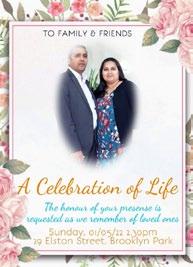
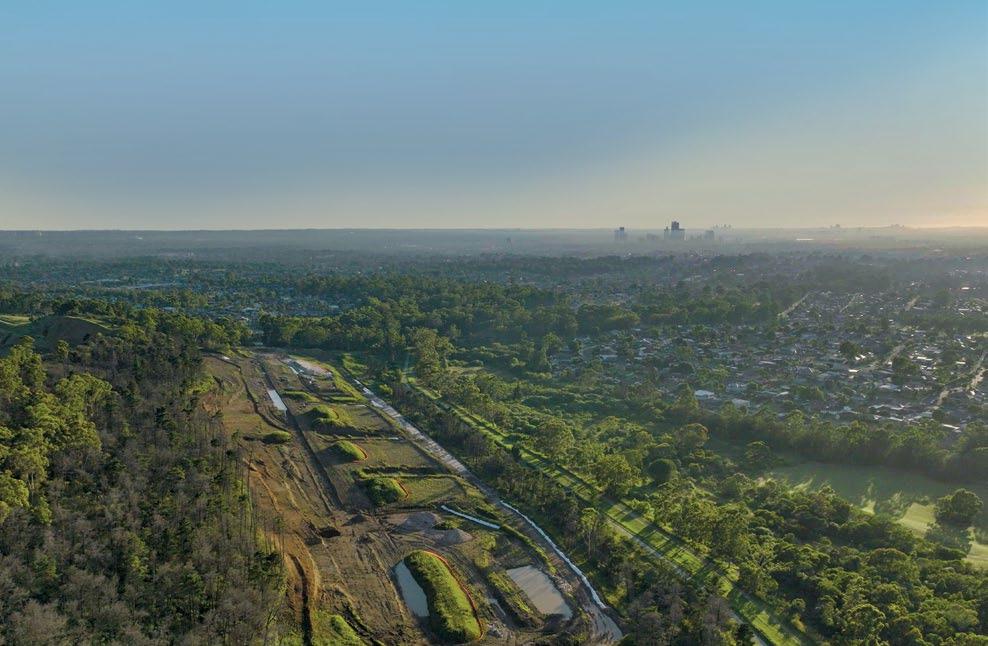


There are EnCOMPASS Connectors across all States and Territories in Australia
EnCOMPASS Connectors are located in a range of areas in urban and regional locations and can speak a range of languages.
EnCOMPASS Connectors can help you, in your preferred language
EnCOMPASS Connectors can provide FREE information about your aged care support options

For details in Hindi please contact Kiran - Aged Care Connector Phone: 02 9718 6199; Mobile: 0451-885-676


Email: connector@mc.org.au
Website: www.multiculturalcare.com.au
With thousands of international students still recovering from post-pandemic financial and mental strain, the Indian Students’ Association of Victoria (ISA) has been a ray of hope.
It was their ground-breaking work which contributed to the Federal Government announcement in November 2021 to extend the stay of Temporary Graduate visas from two to three years for master’s coursework, along with amendments to facilitate Vocational Education Training sector graduates to receive a two-year temporary graduate visa. A replacement visa was also announced for students who were unable to return to Australia due to border restrictions.
According to ISA President Karan Mehta, this was a “massive win” for the ISA.
“Throughout last year, we were receiving high volumes of calls from students, stuck offshore as well as those onshore, who were reaching out for help,” he told Indian Link. “We conducted an online survey, and the findings were then sent to the High Commission of India. Conclusions from the same study were drafted in the form of recommendations and passed to the Federal Government.”
That the Government based its new announcements on the ISA’s initial spadework, is a “definite gamechanger”, Karan added.
The ISA’s work in this area, however, began much earlier. An early success was ISA Care, which provided international students with an opportunity to avail mental health services by professional counsellors, free of cost.
It came about after the ISA’s yearly conference in the presence of Mr Raj Kumar Consul General of India (Melbourne) along with VicVise President Manorani Guy and Indian Care Coordinator Jyothsna Rao. The aim of the conference was to facilitate dialogue towards supporting international students post COVID-19 through various programs.
“We were able to jointly identify that along with homesickness, academic pressure, unemployment and financial limitations, what students feared the most was instability and uncertainty,” Karan noted.
“It was disheartening to see that students had been suffering for so long with no place to vent out their issues. We were glad that with ISA Care, they finally had a positive and confidential forum to open up and seek assistance.”
The response has been overwhelming and ISA Care has now extended the program by another year.
“The journey as an international student has never been easy in Australia. The pandemic just made it even worse,” Karan observed. “Some of the measures we have helped put in place will provide some degree of relief to thousands of international students questioning the worth of their psychological strain, struggling to find jobs, and facing massive financial investments towards their studies.”
The idea of Indian Students’ Association Victoria was first mooted in 2019 when various international student leaders from
universities across Victoria met at the governor’s house.
“We realised that there existed a huge gap in the representation and advocacy for our Indian student community,” Karan recalled.
The non-profit organisation now registered under Consumer Affairs Victoria collaborates periodically with nine major Indian Clubs from Australian Universities including Monash, RMIT, Deakin – Geelong and Burwood, Melbourne University, Victoria University Swinburne and Latrobe.
The key players involved in ISA are past or present international students, who have foundational knowledge and first-hand experiences in the aspects of employment, permanent migration, and student rights. Support from community platforms and from Indian government bodies are also doing their bit.
“We believe that cross-unit collaborations, the executives and individual support from
our affiliated members are the driving force behind ISA,” Karan added.

With the Indian student numbers growing so strongly, it was a matter of time before they organised into a forum like the ISA.
“It would not be completely wrong to say that Indian international students today are fighting a battle to revive their identity as a community,” Karan noted. “Right from retail and hospitality to white-collar jobs, we contribute our best to run the economy.”
The international education sector contributes more than $40 billion to Australia’s economy. Recent figures show that India remains the second largest source of international students, with nearly 70,000 enrolled in Australian universities as of 2022.
Karan sees the role of the ISA extending beyond university.
“Thousands of Indian students come to Australia every year, a large chunk of who aspire to settle here permanently. However, the road to permanent residency is not that easy,” he explained.

“If we look at the concept of ‘skill assessment’ for instance, they are directed to take the assessment to prove that they possess the required skill for the occupation one applies for. Why do I have to give another exam to prove the legitimacy of my learning, after graduating from a certified Australian University despite my professional experience? Why is there a cost associated with it? These are some of the questions we are yet to seek a response for.”
It seems the Indian Students’ Association of Victoria is quickly headed towards becoming a one-stop platform for all Indian students, giving them their ‘home away from home’.









d r Michelle Ananda-Rajah, a newly elected Member of Parliament with proud South Asian ancestry, about her journey into politics, her vision, and
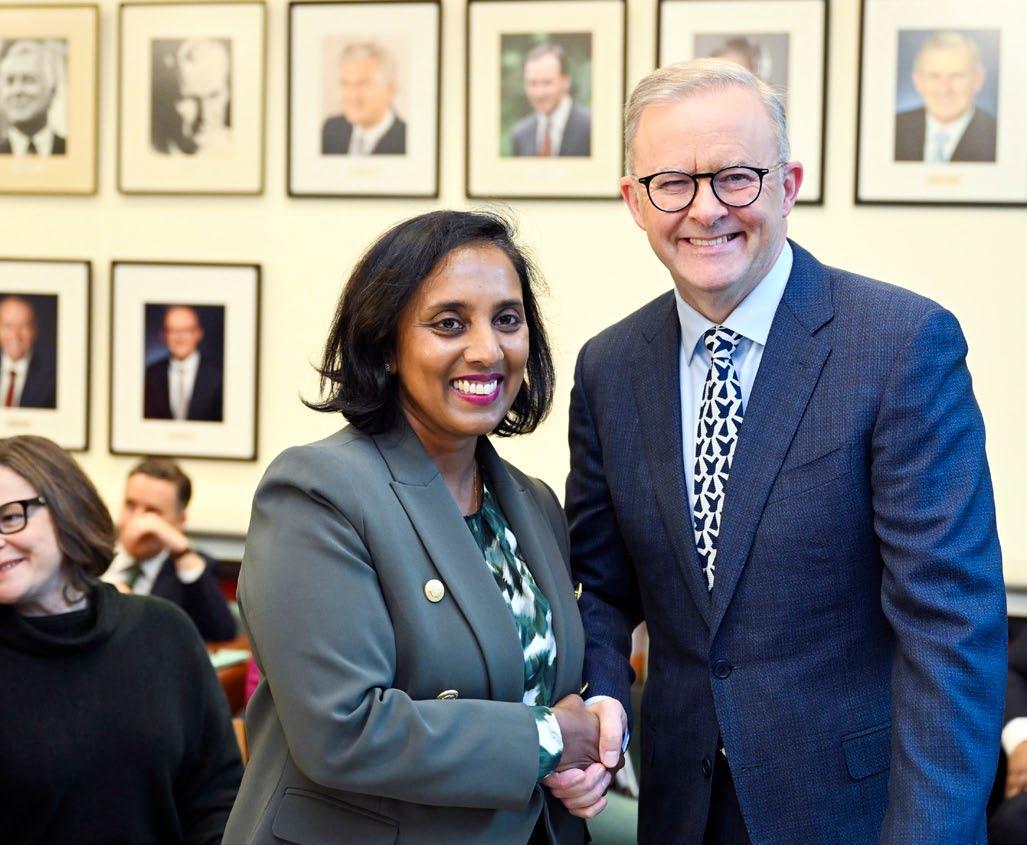
As the dust settles from an extraordinary Federal election campaign, it has become clear that Australia has voted in a more diverse parliament than we have ever seen before in our history. Politics aside, this fact alone is something that we ought to celebrate and be immensely proud of. One of the most fascinating stories underpinning
the changing face of Australia’s parliament at this election has been the impressive rise of the new Member for Higgins, Dr Michelle Ananda-Rajah of the Australian Labor Party. A seat that had been held by the Liberal Party since its creation in 1949, Ananda-Rajah’s success in Higgins was one of several history-making results that has shaken up the way we view electorate and political structures. I spoke with Dr Ananda-Rajah, a newly elected member of parliament with proud South Asian ancestry, about her journey into politics, her vision and what this election means for multicultural Australia.

Ananda-Rajah has a CV that would make the best of us stare in awe. Yet, she is certainly not someone who you would consider to be a stereotypical politician. Asked if she ever envisioned herself running for office, it’s a categorical “No. Not at all. Not even close.”Indeed, Ananda-Rajah admits, “I have little political experience. None virtually.” Yet, it’s her life experience outside of politics that may very well be her greatest asset as she prepares for the upcoming term of government. One major criticism of the way candidates are selected by parties across the political spectrum is
that many have had limited exposure to the world outside the ‘Canberra Bubble’. Contrastingly, there is a refreshing element of activism, advocacy and a wealth of life experience that Ananda-Rajah is evidently itching to bring to parliament. She notes,“I’ve come late to politics. I’m 49 years old and I’ve lived a lot of life. I’ve raised two children, I’ve studied. I’ve been not only a doctor, but also an academic and an activist and so I bring a lot of lived experience to the role and I think that’s a very good thing”.
Yet, whilst parliament was not necessarily at the top of her mind, her work as a
"I looked around (Labor's first
and saw a snapshot of modern Australia"
what this election means for multicultural Australia
public health advocate during the worst periods of the COVID-19 pandemic meant that she has been no stranger to scrutiny and the pressures of public life. Perhaps unsurprisingly, Ananda-Rajah remarks that “the pandemic is really what activated me - it made me realise that the fastest way to affect change at a speed and scale that is most effective, is through politics.”
Ananda-Rajah possesses a clear passion for improved diversity and inclusion, and she provides some sagely advice for our next generation of leaders. “As a person of colour you are going to always encounter more headwinds than tailwinds. The only thing you can do and the only thing you can control, is how you react to these biases, ill-conceived prejudices, or covert barriers. My advice is to keep going, and to invest in [your] skills, whatever they may be.”
Indeed, it is not lost on Ananda-Rajah that her election has inspired people of colour across the country. She observed that Labor’s first caucus meeting after the election “was an incredibly moving, poignant experience for me because I looked around and I saw a snapshot of modern Australia”. It’s a fair assessment to make, especially with the election of Ananda-Rajah herself, Zaneta Mascaren has, Sally Sitou and Sam Lim amongst others. Accordingly, Ananda-Rajah characterises the achievement of a more gender and culturally diverse parliament as a “triumph of modern Australia, but also a testament to a political party that made decisions decades ago to level the field”. There are still some question marks on this subject though. It is true that
the 47th Parliament of Australia will see more women and culturally diverse representatives than Australia has ever seen before. Yet the ALP continues to wrestle with the fallout from a disastrous outcome in Fowler with Dai Le spectacularly defeating Kristina Keneally; the latter being a candidate who was criticised for being ‘parachuted’ into what was once a safe Labor seat and an area boasting one of the most culturally diverse populations in the country. Similar criticisms were made of Andrew Charlton in his successful bid for the seat of Parramatta. Ananda-Rajah does not shy away from these observations and admits there are “salient lessons” that must be taken away from the result in Fowler, not the least being that “you can never underestimate or take for granted the importance of local issues and the sentiment of people on the ground”.
Regardless, it must be said that Australia’s Federal parliament has never seen a more positive step with respect to diversity than now. Ananda-Rajah aptly highlights that a party caucus that has better gender and cultural and ethnic diversity will inevitably result in better and more appropriate policy outcomes.
In speaking with Ananda-Rajah, there’s an unmistakable sense of urgency in getting started on the task of governing. Indeed, there’s no shortage to the areas she wishes to make an impact on. “I want to see an inclusive, sustainable, and competitive country. What that means is shepherding Australia through the energy transition, ensuring that we bring onshore manufacturing back to our country, that we achieve gender equality and we address intergenerational inequality, and begin the process of true reconciliation and reparation with our First Nations peoples.”
On the topic of South Asian relations specifically, Ananda-Rajah is critical of the previous government, arguing that their foreign policy “was very much characterised by neglect.” She points to Anthony Albanese’s immediate departure for Quad meetings as well as engagement of Pacific nations as evidence of Labor’s attempt to recalibrate those relationships and is herself excited to play whatever role she can to bolster Australia’s relationship with South Asia.
One thing is for sure: Ananda-Rajah has not entered parliament just to make up the numbers. It is patently clear that Higgins has elected a woman who is unapologetically strong in her convictions, and in her passion for change and advocacy. Fittingly she states (of politicians), “You need to have convictions you’re willing to defend - even in the face of insurmountable pressure.”
More than just a win in the battle for improved representation for diverse communities, Dr Ananda-Rajah’s entry into parliament is a refreshing change that may ultimately be a vital win for Australia’s future.



“As a person of colour you are going to always encounter more headwinds than tailwinds”
“The pandemic is really what activated me - it made me realise that the fastest way to affect change at a speed and scale that is most effective, is through politics”Prime Minister Anthony Albanese congratulates Labor member for Higgins Michelle Ananda-Rajah after signing the Labor Caucus book during a Labor Party Caucus at Parliament House in Canberra, (Photo: AAP) On the campaign trail: With former PM Kevin Rudd and Penny Wong. (Photos: Joshua Pelach)
Have you seen something that doesn’t feel right? One small observation could help stop a much larger border crime.
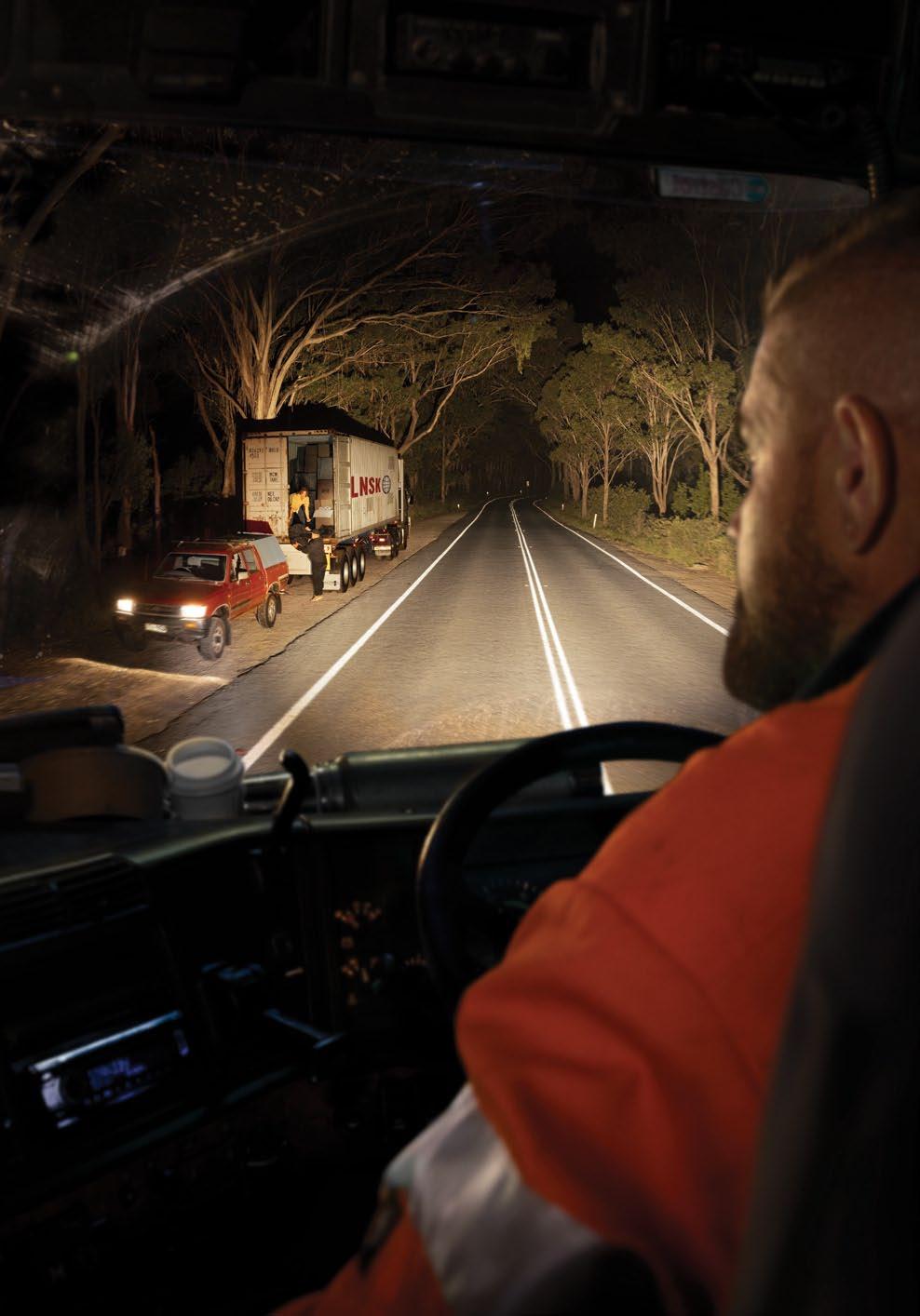
Authorised by the Australian Government, Canberra.

When Delhi-based writer Geetanjali Shree encountered an old woman lying with her back turned to her family members, apparently with no interest in living any longer, the image stuck in her mind.
She recounted, “My curiosity grew as to, is she turning her back on the world and life, or is she preparing to get up into a rejuvenated, reinvented new life?”
The seeds were sown for her Hindi novel Ret Samadhi (Rajkamal Prakashan, 2018), which was translated by American writer Daisy Rockwell (Penguin India, 2022) as Tomb of Sand.
It is the first Hindi novel, and the first book originally written in an Indian language, to win the prestigious International Booker Prize.
The “extraordinarily exuberant and incredibly playful” book, according to the chair of judges Frank Wynne, is about an 80-year-old woman, Ma, who falls into a depression after her husband’s death.
To her family's consternation, she insists on travelling to Pakistan, simultaneously confronting the unresolved trauma of her teenage experiences of Partition, and re-
evaluating what it means to be a mother, a daughter, a woman, and a feminist.
Despite this tragic premise, however, it has been applauded by critics and readers alike for being engaging, funny and original.
“(Tomb of Sand) is a luminous novel of India and Partition, but one whose spellbinding brio and fierce compassion weaves youth and age, male and female,
family and nation into a kaleidoscopic whole,” said Wynne, a translator himself.
In her acceptance speech, Shree said she was “delighted, honoured, and humbled” by this huge recognition.
“There is a melancholy satisfaction in the award going to it. Ret Samadhi / Tomb of Sand is an elegy for the world we inhabit, a lasting energy that retains hope in the face
of impending doom. The Booker will surely take it to many more people than it would have reached otherwise, that should do the book no harm,” she said.
The win, it has been noted, could potentially encourage more translations from other Indian languages - tens of thousands of books are published in Indian languages every year.

“Behind me and this book lies a rich and flourishing literary tradition in Hindi, and in other South Asian languages,” Shree observed. “World literature will be the richer for knowing some of the finest writers in these languages. The vocabulary of life will increase from such an interaction.”
The judges considered over 130 books for this year’s award. The other books in the shortlist included Heaven by Mieko Kawakami, Elena Knows by Claudia Pineiro, A New Name: Septology VI-VII by Jon Fosse, The Books of Jacob by Olga Tokarczuk and Cursed Bunny by Bora Chung.
The Booker Prize fund of around AUD 90,000 will be split equally between Shree and translator Rockwell.
Tomb of Sand has also been the winner of the English Pen Award.
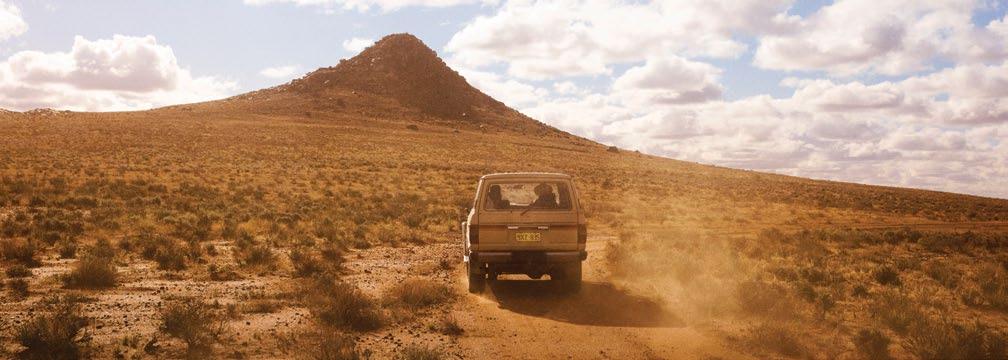

Author of three novels and several story collections, Geetanjali Shree’s work has been translated into English, French, German, Serbian and Korean. She has received and has been shortlisted for a number of awards and fellowships.
Daisy Rockwell is an artist, writer and translator living in northern New England, USA. Apart from her essays on literature and art, she has written Upendranath Ashk: A Critical Biography, The Little Book of Terror and the novel Taste. Her highly acclaimed translations include, among others, Upendranath Ashk’s Falling Walls and Bhisham Sahni’s Tamas, published in Penguin Classics.
Rockwell’s translation is longer than Shree’s original. Explaining this, Shree noted, “Translation is dialogue and communication. It is never a fixed, frozen and complete exchange. It is ongoing, live and enriching – some things are explained better, some remain confounding, just as in any communication. Some things may also get lost, but some things also get added. Just as when two people talk, they enrich each other and enlarge each other's way of seeing, being, and experiencing, so also is communication underway in translation.”
She added tellingly, “Dialogue, which is what translation is, is the best thing in human life, and the way forward.”
From IANS reports


Pace of life too hectic? Reclaim a sense of belonging with land and life at the picturesque Blue Mountains, one of Australia’s most spectacular wilderness areas. Only a two-hour drive from Sydney, the soaring sandstone ridges, spectacular gorges, streaming waterfalls, lush rainforests, expansive tablelands and rolling valleys make the region a great outdoor place any time of the year. It glows in autumn, chills in winter, bursts with colour in spring, and refreshes in summer.
One of the most visited sights here is the glorious rock formation known as the Three Sisters, best viewed from The Echo Point lookout in Katoomba. Experienced by millions each year, the view changes every hour as the sun moves from east to west.
The breath-taking Scenic Railway, the steepest railway incline in the world, takes riders down a sharp descent through a tunnel and the beautiful fern-damp cliff face. The Scenic Cableway, the steepest aerial cable car in Australia, offers a 545m ride into the World Heritage Area rainforest of the famous Jamison valley.

Port Stephens is wonderful day trip away for those wishing to let loose and feel the thrill. Sail (or surf) the waters, conquer the desert sands, and experience the hinterland. Nelson Bay is unquestionably the hub where most day-trippers land. Get on a boat from the town’s impressive marina, and cruise the surrounding waters. Look out for Indo-Pacific bottlenose dolphins, and migrating humpback whales between May and October. Swimming with the dolphins is described by many as an experience of a lifetime.
If the surf beckons, then some 26 beaches await your pleasure, Shoal Bay being the most popular. Enjoy a camel ride at sunset over the monumental Stockton Bight Sand Dunes, or you might prefer sandboarding, quad biking or dashing over the sandy mountains on a four-wheel drive at Anna Bay. Check out the many sites of cultural and historical significance for the indigenous Worimi people to whom the land belongs since time immemorial.
Nature’s wonder at Port Stephens extends into the stunning greenery of coastal bushlands and forests of the surrounding Tomaree National Park. These provide many exciting walking trails and hiking opportunities.
If you prefer to keep your thrills low key, then opt for a relaxing ferry ride up the Myall Lake to Tea Gardens, check out the sea giants at the Irukandji Shark and Ray Encounters, and visit some sick and injured koalas rescued by the locals and looked after at the Koala Sanctuary – all of which can be wonderful day-trip delights.
If you like bush walking, the Blue Mountains National Park features more than 140km of trails and walking tracks. Choose from guided walks, half and full-day walks, or wilderness hikes.

To get there, consider the M4 Motorway one way, and the picturesque Bells Line of Road the other way, stopping at Bilpin, “the fruit bowl” of the region, picking up a classic apple pie (or a meat pie if you prefer). Or try afternoon tea at the Hydro Majestic - one of Australia's most iconic historic hotels that features panoramic views overlooking the Megalong Valley.

Nestled in the Southern Highlands of NSW, the charming country town Bowral has attracted Sydney daycationers for decades.

It is 115 km or about 2 hours from the centre of Sydney. To get the most of your daycation, start early, and get there in time for coffee and croissants at the Press Shop, at the corner of Bong Bong and Banyette Streets.
Refresh the mind, soul and the palette as you browse through boutiques and antique stores and enjoy the local produce at gourmet restaurants and cafés.
Pop in to The Potting Shed and The Orangery for supplies to rejuvenate the garden – both indoors and outdoors.
At Dirty Janes Antique Market, over 40 independent dealers present anything from French tapestry to vintage jewellery to whacky wall posters – an engaging way to spend an hour, or three!
For cricket fans, a must-do activity is a visit to the Bradman Oval, Bradman Museum and International Cricket Hall of Fame, which are dedicated to the achievements of the legendary Sir Donald Bradman, and his contributions to the game of cricket. Take a peek also at Sir Donald’s childhood home at 52 Shephard Street, now lovingly restored by a fan to its former glory.
Try the Centennial Vineyards for a bit of wine tasting and a leisurely lunch. The restaurant overlooks the vineyard, and provides a unique alfresco experience in summer, and in winter the cosy and rustic appeal is enhanced by an enormous fireplace.
It’s not the mountains we conquer but ourselves
An enchanting country town of invigorating distractions
is an immediate connection driving down the South Coast of NSW, bringing back memories of the Malabar Coast. It edges along the Pacific Ocean, and includes Wollongong, Shell harbour and Kiama closer to Sydney, and Shoalhaven, Batemans Bay, Merimbula and Sapphire Coast around five hours by road. The opportunities to at every step along this picturesque coast, however far you want to venture out on your day trip.
The entire stretch is blessed with spectacular beaches and expansive national parks, making it ideal for a fun-filled daycation. There are trails in the National Parks, while for those more adrenaline-driven there’s spotting and kayaking it low-key, try one of the many
For many, the sense of connection comes early as the day sojourn begins with a prayer at the Venkateswara

from Sydney. The Hindu temple draws visitors of all faiths to appreciate its grand architecture. Not far from here, the picture-perfect village of Stanwell Park is an internationally famous area for hang-gliding and paragliding. (This is where Australian aeronautical pioneer Lawrence Hargrave first flew his box kite in 1894.)
Don’t miss the 665m Sea Cliff Bridge, meandering along the coastline next to the cliffs. A wonderful walk across!
Day-trippers also take in the Nan Tien Temple, one of the largest Buddhist sites in the southern hemisphere. All of these sites are on the way to Kiama, a perfect seafront nest for a day picnic with family and friends. The biggest attraction here is the blowhole.

With its spectacular beaches, national parks and semi-urban water-fronted townships, the Central Coast is a wonderful choice for a quick getaway, less than 90 minutes north from Sydney. It provides a leisurely escape into the lap of unspoilt nature, offering delight as well as relaxation.
Well-connected also by rail, Gosford, a modern hideout on the Brisbane Water, is the hub of the region. It lies within close proximity of the magnificent Brisbane Water National Park and not far from the turquoise blue Tuggerah Lake. The Australian Reptile Park nearby is a great venue for the family. Home to exotic reptiles from Australia and around the world, this renowned hands-on zoo boasts loads of animal interaction and exciting wildlife shows to amuse people of all ages. The Central Coast is a beach lover’s paradise featuring many sandy patches, from quiet and secluded stretches through to those where big waves are the drawcard. All are panoramically stunning – but day-trippers prefer Avoca Beach, Copacabana Beach, Shelly Beach, Ettalong Beach, Umina Beach and the Entrance. One way of going past all of the beaches is by cruising the edging waters on a high-speed boat, a rejuvenating adrenaline-rushing tour offered by Terrigal Ocean Tours from Terrigal, another beautiful and popular beachside haven.
It’s interesting to know that three Central Coast towns – Wyong, Woy Woy and Long Jetty – are finalists for the NSW Top Tourism Town Awards this year. Each can be explored as a day trip from Sydney.

Sydneysiders as well as interstate and overseas visitors in awe, is the winter festival of lights, Vivid Sydney. An annual event since 2009, it sparks the soul of the harbour city with a creative lighting wonderland and shows off this
Particularly loved is the illuminated version of landmark buildings like the Opera House, Harbour Bridge, Customs House and touristy domains like the Rocks, Darling Harbour and
Besides lights, the festival in its current form fuses art, innovation and technology into the program in collaboration with some of the top boundary-pushing artists, thinkers and musicians of present time. The festival makes a comeback this year after two years of COVID cancellations. It is on until 18 June, every day from 6 pm until late, swinging
This year there are new lighting venues and arrangements, cutting edge artists, immersive events, unmissable performances, and sensational experiences featuring more than 200 events and artworks, 50 dazzling light installations and 3D projection artworks, 111 eclectic music events and 87 thought-provoking ideas, talks and workshops. Never-before-lit buildings will add new sparkle to the city skyline and an epic water sculpture on a scale never seen before in Australia will rise from the waters of Cockle Bay in Darling Harbour. A key highlight this year will be the longest continuous Light Walk in the history of the event, from Sydney Opera House to Central Station. For other innovations, head to www.vividsydney.com


Feel like a daycation? You’re spoilt for choice in NSW. Seaside, countryside, foodie, sporty, arty, outdoorsy, indoorsy… there’s a spot to match every mood. Take your pick, and feel NEW again. Read on for day-trip ideas.
A quick getaway that's filled with fun

A humpback whale breaches, pirouettes in the air and then splashes back in. A koala rises from its lazy slumber to pose for your camera. The pelicans put on a show for you as you gape at their massive bills. These are some experiences that await you at Port Macquarie, four hours’ drive north of Sydney. From spotting dolphins along the painted breakwall on the Port Macquarie Coastal Walk, to whale watching cruises or strolling the boardwalk of the Sea Acres Rainforest Centre, the unspoiled beauty of the region will dazzle. Further inland, hike the Laurieton track or visit World Heritagelisted Willi Willi National Park.
Imagine looking up and seeing an exquisite shawl draping down from the ceiling – except that it is rock-hard with crystals.
This is but one of the many awe-inspiring sights at the Jenolan Caves.

The calcite crystal formations here – columns and straws and entire coral beds – are breathtaking in their beauty, whether you’re seeing them for the first time or revisiting.

Equally delightful are the names of these structures: The Cathedral, Angels’ Wings, Wall of Noses, Diamond Branch, Crystal Cities, The Crystal Basin, Pillar of Hercules. (Don’t miss the jaw-dropping Indian Chamber and Indian Canopy.)
It is some 3 and half hours’ drive from the Sydney CBD, 230 kms towards the west. Stay overnight at the Jenolan Caves House, a grand hotel built in 1896 as a wilderness retreat for the wealthy.
Set in Blue Mountains World Heritage wilderness, this labyrinth of caves is an exquisite natural wonder. Jenolan is among the finest and oldest cave systems in the world, dated by scientists to be about 340 million years old. The Caves themselves are a spectacular experience. Guided tours take you inside the dried-up river systems. Caves such as the Imperial and Diamond are easy-grade walks, an excellent choice if you’re not quite as mobile as you once were. Follow an ancient riverbed, mostly level, with short sets of stairs.
For a more adventurous experience, try the Plughole – abseil, squeeze, crawl and climb deep into the heart of the mountain, with only a headlamp to light your way. Feel the excitement! Emerge with a brand new swagger and that special exhilaration that only authentic adventure can provide.
Currently, Port Macquarie is playing host to the longest mammal migration in the world. The blue waters here offer reliable sightings of whales - from a heritage-listed lighthouse and beach headlands to lookouts in the Kattang Nature Reserve and Crowdy Bay National Park. Or opt for a cruise with Port Jet Cruise Adventures. Take to the air in Port Macquarie’s only seaplane with Port Macquarie Adventure Flights. Look out also for bottlenose dolphins frolicking in the Hastings River estuary just off the sandy beaches that hug the curves of the Greater Port Macquarie coast. Meet resident koalas at Koala Hospital on historic Roto House; perhaps you’ll be tempted to adopt one! Head to Lighthouse Beach for a unique experience with Port Macquarie Camel Safaris. Meet native furry friends at Billabong Zoo, or head to Ricardoes to pick your own strawberries. A getaway in the Port Macquarie area means getting outside and enjoying the bounty of nature!



If you’re looking to reset, reflect and reconnect, then a weekend away at Kangaroo Valley might be just what you need. Nestled between Cambewarra and the Barrengary Mountains, expect beautiful morning mists and plenty of bird life making your weekend getaway a peaceful retreat. With its cafes, art galleries and souvenir shops, delightful stone pub, cabins in the bush and bush walks, and surprise encounters with kangaroos, possums and sheep, Kangaroo Valley has all the essential ingredients of a magical and rejuvenating mini break.
Be sure to wander over the historic Hampden Bridge, past the cemetery and through the heritage-listed village. Don't miss the Pioneer Farm Museum, a typical 19th century farmhouse. There are memorable places to stay. Designed with a slow pace in mind, Aframe Kangaroo Valley is a perfect spot to reconnect with nature.
Perched atop a hill near Kangaroo Valley, Stella has everything you could want or need for a comfortable holiday stay, packaged into a cosy house far from the tourists.
Look no further than The Dairy, with its unparalleled views, private outdoor area and cosy bedroom for two nestled up in the mountains. This converted dairy is the ideal choice for a couple looking to take a holiday in complete isolation, and with no neighbours except the cows.
Billed as one of Kangaroo Valley's most prestigious properties, Desiderata has received 100 5 Star Reviews on Stayz. A stunning award-winning luxury home set on 10 acres, it boasts breathtaking 360-degree views of the valley with mountainous landscapes and is surrounded by farmland.
Whatever adventure you are chasing, you will find it in the Great Western Plains. Explore some of the most unique destinations Australia has to offer, with Dubbo as your base. Walk, ride, run or row – to discover the great outdoors. Whether you fly amongst the clouds, explore extensive marshes, climb the ranges, or camp under a sky blanketed in stars, you’ll take home memories to last a lifetime. Delve into history, heritage and culture footsteps of those who walked the plains millennia ago. Or explore more recent colonial history. And then, get up close and personal with some animal friends, in a truly unforgettable experience.
Dubbo is a 5-6 hour drive from Sydney, or an hour-long flight.
For many, the Taronga Western Plains Zoo is the headline event in a Dubbo visit. The adventure here is unparalleled in the country. See hundreds of rare and endangered animals in extra large enclosures that mimic their natural environments as far as possible. For a truly matchless experience though, you’d want to stay overnight at the zoo. Imagine waking up to the roar of the lions, or an elephant trumpeting! Walk in the footsteps of a 19th century prisoner at Old Dubbo Gaol. This State Heritage listed site has been carefully restored to create a pocket in time giving a glimpse into Australian prison history. Australia’s prehistoric past is also within reach at the incredible Wellington Caves. Unearth the mysteries of megafauna that once roamed the land. Touch down into the world of heroic doctors, nurses, pilots and outback communities with the Royal Flying Doctor Visitor Experience.


The glittering ocean. Scenic coastal walks. Native wildlife. There’s plenty of opportunities to connect with nature at Jervis Bay and the Shoalhaven region, just three hours’ drive from Sydney. Happiness, they say, is a day at the beach. Check out the whitest beach you will ever see at Hyams Beach, known for its crystal clear waters and a fringe of national park.
Other beaches where you could swim, snorkel, walk or just throw a towel down, include Murray’s Beach, MoonaMoona Creek, Cave Beach, Blenheim Beach, Collingwood Beach, and Nelson Beach.
The calm turquoise waters at Jervis Bay Marine Park are perfect for swimming, snorkelling, fishing and stand-up paddle boarding.
It is a haven for bottlenose dolphins, fur seals, little penguins and whales during their annual migration. Tours depart from Huskisson. Some stunning walking tracks here allow you equal opportunity to get close to nature.
The Hyams Beach trail through Jervis Bay National Park, also known as the bird spotter’s walk, is a 2km return track designed by birdwatchers and is a great place to spot local birdlife such as colourful rosellas.

The 90-min White Sands Walk takes in the coastal forest of Jervis Bay National Park and white sand beaches. To see 270-million-year-old marine fossils, follow the Gondwana Coast Fossil Walk. Don’t miss the prospect of learning more about Australia’s Indigenous heritage here.
At Booderee National Park, guided tours with Aboriginal rangers teach you about traditional bush tucker and medicinal plants. The 2.2km Murramarang Aboriginal Area walking track, which loops past ancient middens and other significant indigenous sites is an immersive cultural experience.
Unplug, unfurl, unwind. It’s Australia’s oldest wine region, but the Hunter is also a popular destination for partygoers of all ages.


For wine lovers and foodies alike, Hunter Valley offers the ultimate getaway with over 150 cellars. Leave behind the bustle of Sydney streets for the warm embrace of the countryside. From wine tours, and cheese and chocolate tasting to hot air balloon rides and horse riding, it holds something special for everyone.
Start your day right with bubbly breakfast at Restaurant Cuvee - a rite of passage. Then, it’s time to hop on to tasting tour buses enroute to Australia’s most distinguished winemakers, including Tyrell’s Wines, Cockfighters Ghost, and Tulloch Wine in Pokolbin; Gartelmann Wines and Lucy’s Run in Lovedale; and Winmark Wines and Krinklewood Vineyard in Broke. For the perfect sunset shot, head over to Allandale Winery in Lovedale. And if wine isn’t quite your alcohol of choice, there are tons of breweries like Hope Estate or Hunter Beer Co, promising craft beers and ciders, all made on site. The certified organic Hunter Distillery produces a top range of spirits - including a special chilli vodka that comes with a warning, though it might be considered mild for our South Asian palettes.
Of course, there’s more to Hunter Valley than just drinks, as the region boasts of many hatted and acclaimed restaurants. Meat lovers, try Blaxland Inn for delicious steaks. Yellow Billy, the new kid on the culinary block, Emerson’s Café and Restaurant, Circa 1876, EXP Restaurant, and Hunters Quarter are other suggestions. Hunter Valley Wine and Food Festival is currently on.
Feel like getting away from it all, briefly? Whether you want to explore nature, history, heritage, or food and wine, there’s a destination to match every mood. Take your pick, and feel NEW again.
His Holiness Pramukh Swami Maharaj (1921-2016), Bhagwan
Swaminarayan’s fifth spiritual successor, had very little formal education, leaving school after Year 6. Yet, for over 75 years as the administrative president from 1950 onwards and for 45 years (1971-2016) as the spiritual head of BAPS, his leadership skills were outstanding. He faced many make-or-break and crisis situations, and his responses were nothing short of inspiring.
Here are some incidents that illustrate his exemplary approach to critical situations.
EARTHQUAKE RESPONSE
The tragic events of 26 January 2001 will live long in the memory of the people of Gujarat, India. The devastating 7.7 earthquake, with its epicentre in Kutch, caused enormous and widespread damage and loss of life throughout the region.
Pramukh Swami Maharaj was in the village of Bochasan on the day. He was at breakfast when the tremors were felt at 8.46 am. Shortly thereafter, he began receiving reports about the scale and spread of the disaster. Wasting no time, he began contacting the senior sadhus at BAPS centres throughout Gujarat and especially in Bhuj, instructing them to initiate emergency relief efforts.
As a socially responsible leader, Pramukh Swami Maharaj took the initiative to direct all his available resources in the service of the needy. His continued attention to detail amid the larger picture revealed an extraordinary degree of empathy


and compassion. He swiftly extended emotional, material and spiritual support to people of all backgrounds, and kept the initiative sustained for a prolonged period.

His leadership in the aftermath of this natural disaster was decisive and proactive.
THE AKSHARDHAM RESPONSE
Gandhinagar, India, 24 September 2002. At 4.45 pm on a pleasant autumn afternoon, the unimaginable happened: out of the blue, a totally unprovoked attack was made on the sacred Swaminarayan Akshardham complex by two terrorists. They raided the holy site armed with automatic rifles and deadly grenades, killing 34 innocent pilgrims and wounding many others. A team of highly trained National Security Guards, an elite counter-terrorism unit under India’s Ministry of Home Affairs, led by Brigadier Raj Seethapathy was rushed to Gandhinagar from New Delhi. After an all-night siege, and the sad loss of two heroic commandos, the terrorists were neutralised by the NSG.
Pramukh Swami Maharaj was 170 km away in the village of Sarangpur when news of the attack broke, busy in a series
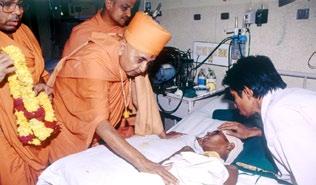
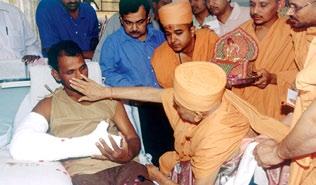
of crucial meetings with senior sadhus. His initial response was a natural reaction to any difficulty he facedsincere prayer. After some moments of deep contemplation, he calmly took command of the situation and marshalled his resources, while responding serenely to the flurry of phone calls from all facets of society.
Everyone was in uproar and demanded a powerful retaliation to this unprovoked attack.Yet, Pramukh Swami Maharaj was a leader of different traits - never ruffled, never rushed, always resilient and constantly reposed. He had his own way of doing things, and this crisis revealed just how much of an out-of-the-box leader he was. He personally issued a nationwide appeal for everyone to remain calm and maintain peace, and banish all thoughts of retaliation, thus preventing further social unrest.
Pramukh Swami Maharaj’s exemplary response was later lauded by all and became a case study as an effective and responsible handling of such a crisis. It became known as ‘The Akshardham Response.’ Dr. A.P.J. Abdul Kalam,
President of India from 2002-2007, writes in his book Transcendence: My Spiritual Experiences with Pramukh Swamiji, “Pramukh Swamiji showed magnanimity by not indulging in any blame game or imputing motives. Swamiji encouraged his followers to pray, not punish.”
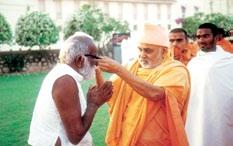
Pramukh Swami Maharaj had shown that forgiveness and non-violence are indeed the stepping stones to achieve world harmony.
Pramukh Swami Maharaj’s innate ability to handle adversity naturally inspired confidence, loyalty and dedication in others.
Over the decades, he faced countless emergencies, and tricky and sensitive situations, which he expertly navigated with an unprecedented presence of mind, compassion and in the best interests of all concerned, reflecting his innate and profound spirituality.
Just like Pramukh Swami Maharaj, today, His Holiness Mahant Swami Maharaj, the present spiritual successor of Bhagwan Swaminarayan, continues that legacy. Through his association, people have been transformed significantly to experience inner peace.
This article series aims to pay tribute to Pramukh Swami Maharaj of the BAPS movement in his birth centennial. To learn more about Pramukh Swami Maharaj’s life and work, please visit www.pramukhswami.org



building and maintaining of relationships with relatives, educators, friends and the outside community in them. This will make them more confident and also make them feel loved, secure and provide them with a sense of belonging.
Recently, I heard my little one say, “This is too hard, I can’t do it!” and then get frustrated about the task and walk away from it. I’m sure you as a parent have heard this too or experienced some form of this and wondered what to do. If you have, fret not, because most of us have gone through this in some way or another. The best way to combat this is to help develop and promote resilience in our young children.
Resilience refers to the ability to ‘bounce back’ after a challenge or tough times. I’m going to list here a few ways with which we can promote resilience in our children.
When our children know they have a strong circle of security to rely on, they will confidently bounce back from setbacks that they may face. It is imperative that we as parents forge strong bonds with our children. We must also encourage the
As parents, we are the first role models for our children. So, the way we deal with any setbacks, problems, or disappointments becomes the mirror for them to follow. It is important to show our children that we have problems too or that we too can make mistakes.
Here's an example.
Parent: “Oh dear, I forgot my wallet today. Oopsies.” There is no hype in this statement. It is merely a statement of fact which shows that problems are just that, problems.
Secondly, it is important to show them how to resolve the problem. Using the example from above, here is what we could say:
Parent: “Now what shall we do? Hmm, I think we might need to go home and grab the wallet.”
In this way, we have shown our children that we are also fallible, and provided them with a practical, appropriate and suitable way to solve the problem as well as move on.
As parents, our instinct is to shield our children from problems. The better solution is to support our children instead. Here are some examples.
• When your child breaks a toy, let them face the disappointment of this versus rushing out to replace the toy.
• When your child doesn’t get what they want (eg for their birthday/meal times etc), let them feel the emotions and talk to them about how they are feeling versus fixing the problem for them. Overcoming these small challenges will help to build our child’s resilience for bigger setbacks.
As parents, we can teach our children developmentally appropriate problem-solving skills when they are faced with scenarios that are difficult.
An example of such a scenario: A child was unkind to your child in the playground. Your child is now upset. Now, how do you help your child to resolve this with resilience?
• Let your child feel the emotions that they
need to feel
• Talk to them about how they are feeling and support them through this
• Brainstorm with them ways on what they could do the next time this happens
• Re-enact scenario with puppets and watch them put into practice what they have learnt
It is important to support and encourage our children to keep trying and having another go when they can’t get it the first time. Praise them for the efforts of trying, using phrases like “Well done for giving it another go.” Another way to do this is to create a habit or ritual of recognising and acknowledging positive incidents that have occurred during the day by each of the family members. This could be done at meal times.
Doing the above will help to build on our children’s compassion as well as show them how to be kind to themselves. This will enable them to face their setbacks in a more positive light.
All of the five ways presented here are great at promoting resilience. Building resilience from a young age will build confidence in our young children to deal with the next challenges that come their way.




With over 1.8 million followers on TikTok (and counting), Avneesha Martins is quickly becoming a familiar name among South Asian Australians. Her videos feature the self-deprecating, millennial humour we know and love, though it’s probably got older generations scratching their heads in confusion.
One video’s about listening to sad music when you’re sad to feel sadder… except your mum keeps interrupting you.
Another video tackles the desi parent’s penchant for home remedies to cure even the tiniest of sniffles.
In one amusing take on everyday life, Avneesha discusses the classic Apple vs Android feud, this time in song.
It’s probably no wonder then that she’s always hearing comparisons with fellow social media personality, YouTube’s Lilly Singh.
“I do get that a lot, she’s been a huge inspiration,” Avneesha laughed. “When I started out, I wanted to market myself as a musician, so my content was very focused on my music. But TikTok gave me the freedom to explore and show off different sides of my personality, like goofing around wearing a moustache!”
The 28-year-old Canberra native, now based in Sydney, has amassed a massive social media following in just two years, assisted by her husband Jarrod Martins with filming and editing. Some of the best ideas come from everyday experiences, she said.
“I’ve got notebooks filled with random scribbles of ideas that I’ve gathered over the years. It’s really fulfilling to make this content and see how people react to it,” she explained. “Sometimes I’ll make a video on things I thought to be unique to me, like I once made a video about the amusing way my father brushes his teeth, and then comments flooded in with people sharing their own hilarious experiences with their parents.”
Avneesha’s career in performing and entertaining goes back to her early years. She recalls singing all throughout her childhood, including Canberra Gurudwara. In 2018, she went on to join Australian pop girl group Mischief where she was able to “learn how the industry works.”
Now a solo artist, Avneesha describes her sound as a unique mix of R&B with an infusion of Bollywood and Punjabi. Her first Punjabi single, ‘Meri Jaan’, released recently, has already amassed more than 10,000 views.
“The Internet has become a great equaliser in allowing our content to reach many audiences,” Avneesha observed. “We’ve seen the massive success of artists like Tesher with ‘Jalebi Baby’ in the mainstream and it shows there’s room for a different kind of sound in the

Western market.”
In defining her sound, she points to local talent like A.GIRL among some of her favourite musicians, along with international artists like Drake and The Weeknd. From India, she highlights AP Dhillon (“the production and styling of his music reminds me a lot of Drake,” she noted), Badshaah, Micky Singh, and upcoming musician
“We’re getting there bit by bit in terms of diversity, but it’s definitely important for us to fight for each other and boost each other
Last year, the TikTok star had the chance to co-host the TikTok Trending show on iHeartRadio alongside G Flip, Tannar, She’s recently joined Western Sydney’s new hip-hop/R&B youth radio station CADA to present her own show, Keeping Up with Avneesha.



“TikTok changed my life!” Avneesha said. “I really put myself out there and I’ve been getting these amazing opportunities to present events, work with brands, and share music.
I’m so excited that we now have a specific radio station for hiphop and R&B in Australia, it’s an amazing way to showcase all the incredible local talent here.”
Currently reading Atomic Habits by James Clear
Currently watching I love a good romcom! The last movie I watched was Marry Me starring Jennifer Lopez and Owen Wilson.
Currently listening to Kanye West’s Donda 2 and Jack Harlow’s new album Come Home the Kids Miss You
Advice for others trying to build a social media presence
Just do it! I know it’s scary at the outset, but it’s so worth it if you love what you’re doing. Stay persistent and consistent and it’ll work out.

Winter often brings more infections from respiratory viruses. This winter, protect yourself by staying up to date with your COVID-19 vaccinations and getting your influenza vaccine.
Why are the COVID-19 and influenza vaccines important?
The colder weather that comes with winter can make it easier to get infected with respiratory viruses, like COVID-19 and influenza.
Staying up to date with your COVID-19 vaccinations increases your protection against COVID-19 for a longer time. The influenza vaccine is the best way to protect yourself from influenza and from transmitting it to others.
It is safe to receive your COVID-19 vaccine and influenza vaccine at the same time.
What is a COVID-19 vaccine winter dose and who should get one?
A COVID-19 vaccine winter dose is recommended for some people in Australia who are at a higher risk of getting severe illness from COVID-19.
You should get a COVID-19 winter dose if you are:
• 65 years or older
• Residents of aged care or disability care facilities


• 16 years and older if you are severely immunocompromised
• Aboriginal or Torres Strait Islander and aged 50 years and older.
You can get your winter dose if it has been at least 4 months since your first booster dose.
If you are not at increased risk of severe illness from COVID-19, your primary course of 2 doses and a booster dose provide excellent protection against COVID-19.
What if I have already had COVID-19?
If you have tested positive for COVID-19, it is recommended that you wait 3 months before getting your next COVID-19 vaccine dose.
What is the advice for pregnant women?
Infection from COVID-19 and influenza can be dangerous for women who are pregnant and their unborn babies.
Receiving the influenza and COVID-19 vaccines while pregnant is the best way to protect newborn babies and pregnant women against influenza, COVID-19 and other complications that can harm them.
The influenza vaccine is free for:

• Children aged 6 months to under 5 years
• Pregnant women at any stage of pregnancy
• People aged 65 years and over
• People aged 6 months and over who have medical conditions that mean they have a higher risk of getting a serious disease
• Aboriginal and Torres Strait Islander people aged 6 months and over.
Staying safe this winter
You can help stop the spread of viruses this winter by washing your hands regularly and covering your mouth when you cough and sneeze. You might also choose to wear a mask when you cannot physically distance from others.
You can also help stop the spread of viruses this winter by staying home when you are sick.
Book now
Book your COVID-19 booster or influenza vaccination today with your doctor or at participating pharmacies. For more information, visit health.gov.au or call the National Coronavirus Helpline on 1800 020 080. Select option 8 for free interpreting services.

you would like to enhance that space. For vehicular access (driveway), council requires a separate application form.
Most homeowners are unaware of the approvals required for landscaping their outdoor space and structural elements. What is allowed and what is not? Here’s some information that will help you take constructive steps when seeking local council permission to renovate your yard.
what is a landscaped area?
As per local council, landscaped area is defined as an area of open space on the lot, at ground level, that is permeable and consists of soft landscaping, turf or planted area and the like.
when do you need a retaining wall?
If your front yard or backyard has slope, then building a retaining wall is imperative to control soil erosion and drainage, usability of the yard. Within residential allotments, the maximum height of the retaining wall should be 0.6 metres.
Building a retaining wall
• A retaining wall built on its own can go up to 0.6m in height and does not require council approval.
• The retaining wall can be integrated with the boundary fence (side and rear side) to the height of 1.8 m. Corner lots might have different criteria. Check with your local council.
• Retaining walls built above 0.6m in height require council approval before construction.
• The retaining wall should not be built over the easement in your lot.

nature strip in your front yard: what is allowed?
According to council websites, nature strip (or verge) is public land between the edge of the road and the boundary of your property. Pedestrians use this nature strip, and it conceals a variety of essential services such as sewerage, water pipes, telephone power and gas. Check with local council if
what is the maximum height permissible for boundary fence?
Boundary fence height can be 1.8 m on the side and rear. If yours is a corner block, refer to development control regulations of your local council. Depending on the primary road your residence faces, the front yard fence height will vary. Changes to boundary fence need consent from your neighbors, since it is governed by NSW Dividing Fences Act 1991 (DFA)
what is easement?

Easement is a section of land registered on your property title which gives someone the right to use that land for a specific purpose, such as the council using it for access to sewage. No permanent structures are allowed on the easement.
What is cut and fill?
Cut and fill is the actual process of moving earth from one place to another to make the ground more level. Cut and fill should be maximum 500mm for most councils, anything above will require council approval.
Spa, swim spa and swimming pool require separate approval from council.
what are things exempt from council approval?
Turfing, planting, small raised beds, lattice and arbor for climbers, concreting on the sides and backyards, paving in the side and rear yard, decks, pergola are exempt from council approval if not more than 25 sq m and it fulfills council development standards.
Disclaimer: This article is for information/ educational purposes only, prepared for single dwelling residential lots. New developments have site-specific developmental controls. This article does not consider heritage-listed land and environment living zones. Contact council for site specific and zone-specific developmental controls.
Information presented here is sourced from Hills Shire and Blacktown City Councils.
When it comes to designing or redesigning your home garden or outer space, what are the local council regulations and permits?
bY goPiKA SAMBANTHAM












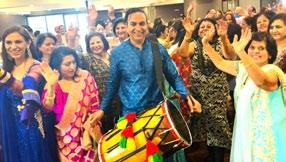

What happens when one sibling is a politician and the other is a gangster? They butt heads because of their inherent differences? Wrong, they kidnap a grand government official together and create their own prison! Kamal Haasan is the star of this action thriller, and is put back to work as a police officer just to save him. Find out what happens on 3 June.


Where can you go in this new Indian film? Teleport into the medieval subcontinent to watch a battle between the warrior king Prithviraj Chauhan and Muhummad Ghori, the leader of the Islamic Conquest of Hindustan. Except this time, the king is reborn through Akshay Kumar with Miss World pageant winner Manushi Chhillar by his side as (one of) his wives. Travel to the 12th century on 3 June.
Seeking a professionally qualified match, teetotaller, of good family background, preferably Australian citizen or PR holder, for highly qualified career-oriented Brahmin girl 35, 5’2”, vegetarian, of good family background, working and well settled in Sydney. Please contact aussyd08@gmail.com
Seeking qualified match, working professional only, from Sydney, for ‘85 born Hindu girl, IT professional. Must be a long-term resident, preferably citizen. Email rukrghrmn@gmail.com with details.
Seeking professionally qualified match (working professional, not self employed) from Australia for ‘88 born, 5"3", Hindu Punjabi girl (divorced, issueless), working with a government organisation in Sydney. Must have Aus PR and preference to Radha Soami follower, teetotaler. Email: matrimonial.ml@gmail.com
Seeking a professionally qualified settled match for Sydney based, never married Aus citizen, Hindu, Punjabi Khatri 49, 5'3" slim, fair, attractive girl. Girl is a postgraduate and is working on a good position in a government organisation. Please contact at ausind26@gmail.com

Major Sandeep Unnikrishnan was a commanding officer who was martyred during the November 2008 Mumbai attacks. Based off real events, this homage sees Adivi Sesh as his representative. Grow up with Major Sandeep from his childhood all the way to his commanding officer role in this action drama.

Releasing worldwide 3 June.
Seeking a professionally qualified settled match for Sydney based, never married Aus citizen, Hindu, Punjabi Khatri 48, 6', athletic built man. He is a project manager with an engineering background and is working in a reputed organisation.
Please contact ausind26@gmail.com
Hindu bride of Tamil origin (Australian citizen, locally educated professional, preferably vegetarian, never married) between 23-28 years, residing in NSW, sought for 31-year-old Hindu groom (Australian citizen, qualified engineer, government employee). The family has been settled in Sydney for the past 18 years. The boy is 165cm tall, athletic, and values trust, spirituality, family, and the outdoors. Please SMS 0404 484 766.
Govinda Waghmare is a man of charm who is grappling with the all-too-well-known problem of having more than one lover, as he devotes himself to his wife as well as his girlfriend. This comedy film will track Govinda’s double life and see if he can keep it up. Watch it all unravel on 10 June.
The Kannada language 777 Charlie is an adventure comedy drama in which the protagonist Dharma, burdened by loneliness, finds comfort in his new companion, a puppy called Charlie. Can this lively and naughty puppy give him a new perspective on life? Watch the bond grow between Dharma and his new best friend on 10 June.


What’s so significant about selling contraception? Well, find out by watching this new comedy drama about a small-town sales girl who sells condoms. She makes her stance, and has given herself the power to spread awareness and change taboos. Showing on screens 10 June.
This film follows a youth with a profound visual memory, who is trying to save his transport official sister-in-law from a gangster. The illegal operation? A road transport operation - perfect for tricking his sister-in-law. If you’ve seen Middle Class Abbayi, you will enjoy this remake of the 2017 Telugu film. It releases on 17 June.


This Tamil drama follows a middle-aged couple who are expecting a new child, much to the disapproval of their two older sons. It is a remake of the 2018 Hindi film Badhaai Ho and directed by RJ Balaji and NJ Saravanan. It stars Sathyaraj as Unnikrishnan, RJ Balaji as Ilango, and Urvashi as Krishnaveni. Scheduled for release 17 June.

Playing the lead doctors in the comedy drama are Ayushmann Khurana and medical student Rakul Preet Singh. The medical drama is written by Sumit Saxena, Vishal Wagh, and Saurabh Bharat, a doctor-turned-writer. It is directed by Anubhati Kashyap with Shefali Shah and Sheeba Chaddha in supporting roles. Coming to screens on 17 June.


The setting of Qala is a snowy landscape that stretches for miles, in a seemingly endless world of white skies and cold wind. This cinematic Indian film is a story of the connection between a mother and daughter. Will they amend their relationship? Babil Khan, the son of late Irrfan Khan stars alongside Tripti Dimri. Release date not specified.
This Hindi comedy drama film is directed by Raj Mehta and is set in Patiala, marked by theatrics of family tension. The drama follows the secret betrayals and scandals of a seemingly happy Punjabi family. It stars Kiara Advani, Varun Dhawan, Neetu Singh and Anil Kapoor. Get ready to watch it unfold on 24 June.

The story of a small-town struggling actor who makes it in a big city is a common trope. But this drama film has an interesting twist to the narrative. Shiva is moving to Mumbai and with the support of his wife, he is posing as a transgender woman, wandering around the streets of Mumbai asking for money. Will this help him achieve his dream? Releasing on 10 June.

Put aside the flour and eggs and sugar. Bring out the lentils and ancient grains instead! The Indian versions of ‘pancakes’ are full of protein and iron, and make for a nutritious breakfast, bento box, or any-time snack. (Remember to use a heavy cast iron griddle or a non-stick pan.)
This protein-rich pancake is vegan, nut-free and can be gluten free too. Great for lunch boxes as it can be eaten at room temperature, smeared with your favourite condiment and rolled up.
i n G redient S
n 1 cup besan/chickpea flour
n 1/4 cup oat flour or whole wheat flour (atta)
n 3/4 cup water
n 1/2 cup grated carrots
n 1/4 cup chopped spinach
n 1/2 tbsp ginger
n 1/2 tbsp finely chopped green chillies
n 1/2 tsp red chilli powder or as per taste
n 1/4 tsp turmeric powder
n Salt to taste
n Oil for cooking
i n S truction S
n Mix the besan and oat flour (or whole wheat flour) with some water and spices and whisk to a pouring consistency. Add veggies.
n Heat a cast iron griddle and start pouring the batter with a ladle.
n Sprinkle some oil on the pancake. Let it cook for a few minutes on low flame.
n Flip over. Sprinkle some oil on the other side. Flip back after a few minutes.
n Serve with mint chutney, fruit chutney or tomato ketchup. note: To make this gluten-free, omit the oat flour or wheat flour. You might have to make thicker pancakes.
This green lentil pancake, vegan and gluten-free, is yummy with a tomato pachadi (a chunky and spiced chuntey), coconut chutney or tomato ketchup.
i n G redient S
n 1/4 cup poha/ rice flakes
n 3/4 cup whole moong dal / green mung lentils, soaked overnight or 4-6 hours
n 1 small piece ginger
n Green chilli to taste
n 1/4 cup fresh coriander leaves
n Salt as per taste
n Oil for cooking
This crispy dosa made with pearl millet flour (bajra) and semolina, resembles the crispy rava (semolina) dosa.




i n G redient S
n 1 cup bajra flour
n 2 tbsp sooji / semolina
n 2 cups water
n 1 medium onion
n ¼ cup fresh coriander leaves
n 1 tsp cumin seeds, crushed
n 1 tsp black pepper,crushed
n Salt to taste
n Oil for cooking
i n S truction S
n Mix bajra flour and semolina along with water.
n Add all ingredients except oil.
n Whisk it into a smooth batter of pouring consistency.
n Heat your griddle to very hot. Pour the batter in with a ladle. You do not need to spread the batter, as it is quite thin.
n Sprinkle some oil over. Let it cook for a few minutes.
n Then flip over and cook for a few more minutes.
n Serve warm.
i n S truction S
n Drain the excess water from the soaked lentils
n Grind all ingredients with minimal water to obtain a smooth batter.
n Heat a griddle/tava and pour half a cup of batter; spread evenly.
n Cook on low flame with a few drops of oil smeared over.
n Flip over. Sprinkle a little oil. Flip back after a few minutes.
n Serve hot with coconut chutney.
This nutritious pancake is a soft crepe, and is wonderful with a hot sambhar and a traditional chutney.
i n G redient S
n ½ cup rolled oats
n 1 cup quinoa

n ½ cup red
masoor dal / red
lentils
n 2½ cups water for grinding
n Salt to taste
n Oil for cooking
i n S truction S
n Soak oats, quinoa and lentils in water for 1-2 hours. Discard water. Grind all ingredients with 2.5 cups of water to obtain a smooth batter.
n Heat a griddle/tava on low heat.
n Pour the batter using a ladle and spread evenly.
n Drizzle a few drops of oil and cook on low flame. Flip over to cook evenly on both sides.
Minal Khona has been reading tarot cards for the last two decades. She uses her intuition and connect with the cards mostly to help people.

MARcH 21 - APRIL 19
Expect healing, inner engineering and concerns about pets this month. You will change your response to external circumstances which will lead you to self love. Some of you may be thinking of getting married. A new beginning is in store. The health of your pet could cause anxiety. Socialise a bit for new opportunities. Take a risk with your ideas and be decisive. Money owed to you will be paid. A sense of clarity about your goals brings happiness.
The card for Libra drawn indicates that stubborn Taureans could be a little less so this month. Conflicts resolved through effective communication, mind over heart and letting go of the past are on the agenda. Patching up with estranged old friends could also happen suddenly. Drive carefully and avoid speeding. You get clarity about a relationship and realise it is not what you perceived it to be. Money matters could be stressful. Change your thought process for better outcomes.
A destiny card indicates preordained events are likely to occur. An opportunity to make money could come your way, but do not repeat past mistakes in these matters. A longstanding problem stays unresolved; let the universe take care of it. Though work is good, there is an underlying feeling of dissatisfaction. An unhappy marriage could be due to money issues or not being with the one you truly love. Avoid getting too anxious about the present; the bad times are ending.
You are confident and busy as you decide to start a new business or a new life. Excessive responsibilities could be a burden. Delegate to reduce your workload. Some of you could get married. Watch your moods as you’ll find yourself on a short fuse and can lose your temper. If chronic ailments persist, opt for alternative therapies for relief. Communicating your ideas clearly will help you succeed. Move on from anything that you have outgrown.
The card for the sign of Cancer appears, which could make Leos moodier. Some of you want to start a work-from-home business. If you do, be clear on money matters, especially if it is in partnership. Singles will be flirty but work could supersede a new relationship. Those in an unhappy relationship may want to end it. Avoid excessive eating or drinking when you are in a bad mood. A stressful situation will soon end. Don’t settle for less than what you deserve.
Some aspects of your life come full circle as new beginnings await. Divine protection is yours for the asking and even if money is blocked, be sure you are protected on all fronts. Not much of romance coming your way this month. Work-related travel is predicted. A pet could need medical attention. Your inner circle of family and friends will help you achieve success. Appreciate those who support you and focus on household chores. Disagreements and arguments will end.
Expect sudden changes on various fronts. Those in a relationship may have a foreboding that it could end soon. An opportunity to promote yourself at work or your business will come your way. Speak your mind in any tense situation to minimise problems. Despite hurdles, finances are steady. A new business venture could get the support it needs. Go with your intuition when it comes to any major decision. Eventually, what you wish for will be manifested.
A difficult month as ill health, blocked progress or a relationship breakdown could be in the offing. The break-up is temporary. If a family member is in hospital, be prepared for the worst. Your finances will be in excellent shape as new projects or old debts getting cleared bring in money. Do not ignore problems related to your prostrate or stomach. What you desire will eventually come to you. A setback is actually a chance for you to grow and deal with your fears.
Beware of someone deceitful in your circle as office politics or personal betrayal could occur. An ex could make a sudden appearance. You won’t be in a mood to compromise in a relationship no matter how much you want it to work. Plans go haywire due to your taking on more than you can handle. Headaches and problems related to breasts could cause health problems for women. Seek help from friends if a problem is overwhelming. Let things be the way they are for now.
For those women wanting to start a family, the appearance of the Empress card indicates it is a good time to try and conceive. Superficial relationships will no longer satisfy the singletons out there. Travel and property matters are on the anvil. Upper back issues could bother you. Meditate on your emotions as they are often the cause of pain in this region. Money due to you could be delayed. Stay calm even when colleagues or family members make communication difficult.
There could be delays on all fronts for Aquarians. Setbacks and fatigue could bog you down too. Singles will not want to be with anyone for the sake of it, even as they seek meaningful interactions. If someone close disappoints you, worry not, as you will switch off rather than fight or stress over it. Work causes burnout so take a break. Ask for what you deserve in money matters.The universe will fill the void within you.
Expect hectic activity, short trips, a change of home or even an extra workload. You could find yourself exhausted due to overwork; take regular breaks. If you have outgrown a job, person or hobby, it will no longer make you happy. Anxiety about money could stress you. Complete all projects as a new job or lifestyle change is coming your way. Be thorough in everything you do. If a relationship doesn’t seem to be working out, let it go.
I have a romantic problem that I need your help with please. I am 29 and single. I recently went back to India after 5 years, and Auntyji, something weird happened. So I met up with my childhood best friend, who is also a friend of the family. Vicky and I have been close friends forever; we just understand each other. Now Auntyji, on this trip, something was different. Granted, I think I went back with a bit of an attitude because I had coloured my hair pink and was mostly looking like a goth reject from the ‘90s, but also because I was having an existential crisis because of my impending milestone birthday. To cut a long story short, Vicky came to drop me off at the airport. At the airport, as he unloaded my luggage from the car, Vicky gave me a look. Now I’m 29 years old, I know that look - I have seen it before many times. but he didn’t say anything, Auntyji. Yet our eyes met and something happened. I was so surprised that I turned away and pretended nothing had happened - but I knew I was blushing because my face had turned hot. If he noticed, I was hoping that he thought it was simply my pink hair that was reflecting on my sunhera chehra. but Auntyji, now that I’m back in Sydney, and Vicky and I are back to exchanging friendly emails and texts, I’m wondering


BAAZAAR
DIRECTOR: Gauravv K. Chawla
STARRING: Saif Ali Khan, Rohan Mehra, Radhika Apte, Chitrangda Singh
HHHHH
I can’t recall a single notable (or even non-notable) Indian film based on the plunging dips and giddying highs of the stock market. Do you remember Harshad Mehta? How could you forget the podgy stockbroker who made thousands of Indians rich overnight and then it all ended in a financial mess in no time at all?
Saif Ali Khan’s Shakun Kothari’s destiny run on the same lines.
Except that Saif as the wily ruthless
what to do about that look. His texts and emails are the same - but Auntyji, oh that look! The only thing that was missing was a bollywood number playing in the background and rain falling slowly on us. Should I say something? What could I say? Or should I let it drop? I have to admit to you, dear Auntyji, that getting together with Vicky would not be such a bad thing - because now that I have thought about it, he is super smart, very good looking, so sweet and kindand that look mein kaafi garmi thi. What do I do, Auntyji?
AUNTyJi SAyS
Machiavellian stockbroker is everything that Harshad Mehta would have wanted to be. This is Saif’s most gloriously written and performed part, meaty witty and wicked. He chews into it exposing a sacred hunger that I didn’t notice in his last over-hyped outing.
Saif as Shakun is a true-blue Gujju who won’t let neo-affluence corrupt his cultural integrity. He slips into Gujjufications with the unrehearsed cuteness of tycoon, who has long ceased to be cute to everyone, including his own wife and children.
When debutant Rohan Mehra enters the plot as Rizwan there is no Shakun Kothari around. We know Rizwan idolizes Shakun and wants to be like
28 18
Aay haay, kya baat hai, meri gulabo sundari! Meri badami barfi! What a romantic story you have told meyou have gotten me so excited that I just had to go and read a Harlequin romance just to get my satisfaction. Now, here is the start of your prem kahani. Your hero, your jigri dost, your bachpan ka saathi, the one who knows you better than any other friend, and who happens to be gorgeous, smart, kind and sweet, gave you a look. How lucky you are, you
Australians value freedom of expression but laws against hate speech are still essential
BY mATT KeANAustralia is a country of great diversity. You can see it in the faces of the people that you work with. You can see it in the restaurants that line the main streets of our towns. And you can see it in the variety of religious and cultural events celebrated around the country: Chinese New Year, Diwali, Hanukkah, Ramadan and Christmas to name a few.
A flourishing society also requires more than just freedom of speech; it requires security, stability, a just legal system and a vibrant economy.
the mentor and the protegee together. Saif and the very fine and confident debutant Rohan Mehra just don’t have enough scenes together. In fact Rohan builds a better bond with Saif’s screenwife Chitrangda Singh in just one scene where the teary-eyed protegee tells his mentor’s wife that sometimes you just need to give the one you love a tight slap. The written word seldom gets to be conveyed with such unvarnished directness in commercial Hindi cinema where everyone either talks florid or over-casual.
A flourishing society requires more than just freedom of speech; it requires security, stability, a just legal system and a vibrant economy
That is why freedom of speech is not absolute. In this country, it is criminal to disclose secrets which risk the lives of Australian soldiers. It is likewise a crime for a corporate executive to disclose market sensitive information to his mates. The law protects us from slander and protects privileged comments made to our lawyers.
In Baazaar the emotions are tightly reined-in as caustic vitriolic conversations are let loose with not a care about who’s eavesdropping.
zaalima! How you didn’t return the look straightaway and decide to spend another week in India and the flight to Sydney be damned, is beyond me. So, all of us want to have as a partner someone who is our best friend, first and foremost. It seems you already have this. And then, the icing on the cake is that he started proceedings with a look. So my dear sharmilee, the ball is in your court. Yes, you have to say something. At least give it a red hot Aussie, that’s the least you can do. So the next time he posts a picture of himself on My Face or whatever social media you kids use nowadays, you can post a complimentary comment. Say you wish you were there. Say something that invites interest. And for god’s sake, don’t be cryptic - because being mysterious got no one anywhere fast. So yes, you have my blessing to proceed with haste. And if you really don’t know what to say to start this prem katha, then how about this line: “I want you to look at me again like you did that day”. Don’t forget to invite me to shaadi, nah - I’ll be in Delhi in
My favourite line, and the one that says it all about Shakun Kothari, is the one in the run-down Gujarati bhojanalaiya. “You think I come here because I love the food? No, the food is terrible! But it helps me never forget where I came from.”
However, the treatment of the Aboriginal peoples in this country stands as a chilling reminder that tolerance has not always been embraced. The Cronulla riots similarly
As a society, we recognise that these restrictions do not hurt our democracy or way of life. Indeed, we understand that they are necessary to maintain it. And laws against hate speech are no less necessary, because racism and bigotry tear at the heart of our social fabric.
him - a very dangerous ambition to have. And who knows this better than Rizwan’s wife Chitrangda Singh, who in
Racism and bigotry leave people feeling exiled in their own home. They do not improve the quality of public debate nor do they assist the wise
The brilliance of the line is never forgotten in a morality tale that never pushes its righteousness into our face. In fact I suspect the very assured debutant director Gauravv K. Chawla actually enjoys his grey protagonist’s amorality.
humiliate or intimidate another person or a group of people” if “the act is done because of the race, colour or national or ethnic origin of the other person”.
(Nikhil Advani, Parvez Sheikh, Aseem Arora) is that it takes its time in bringing
colleague makes space for herself. In a way she tokenizes the film’s morality. In today’s times you have to push your way
revive memories of past wrongs.
There is no doubt that freedom of speech is important but it is important because of the role it plays in our democracy. Freedom of speech ensures that when you or I go to the ballot box we can make an informed decision about who to vote for.
pain of racially justified persecution. Examples such as slavery in the United States and the Holocaust are well known. In recent times, the world has seen genocides in Rwanda and Bosnia, while today in North Korea persecution is justified by racial supremacy.
Going through a separation? Having trouble managing a difficult relationship? Broadmeadows Family Relationship Centre can help. At Broadmeadows Family Relationship Centre we support separated families to establish parenting, financial and property agreements. Mediation facilitated by a neutral and accredited practitioner can help families deal with separation, manage relationships, improve communication and support children to thrive after separation.
You are a soul of a permanent unchangeable nature, and if you would live as a soul, you would never be affected or changed by outer changes.
We welcome families from all cultural and linguistic backgrounds and provide interpreters and support workers to help families from diverse backgrounds through this challenging phase in their lives.


restrictions on free speech do not hurt our democracy or way of life. Indeed, we understand they are necessary to maintain it. And laws against hate speech are no less necessary, because racism and bigotry tear at the heart of our social fabric
Level 1, Building 2, 1100 Pascoe Vale Road, Broadmeadows, VIC, 3047
Freedom of speech is necessary so that as a community, we can debate political ideas and so that individuals can have a say on decisions that affect them.
Sant Baljit Singh
Section 18C ensures that everyone has a role to play in that debate.
-Sant
For more information on how we can help you, please contact:
Baljit Singh(03) 9351 3700
info@broadmeadowsfrc.org.au
Nurture your spiritual life through meditation on the inner Light (Jyoti) and Sound (Naad) and realise your true self. All events are free. for further information
1800 462 193 www.knowthyself.org
Together, we have built a vibrant, rich and diverse society. A society not focused on the differences between us, but founded on the strengths our differences afford us. Section 18C stands, not as a threat to freedom of speech, but as a protector of the purposes which that freedom serves, and as a guard to an achievement exceptional in this time and rare in times before.
mackillop.org.au/FRC
Matt Kean is the Member for Hornsby and Parliamentary Secretary for Communities.